#Corrupt Corporate Leader (trope)
Text

The Lord Protector of Great Britain in ‘Ascent of the Circuit Chaps’ seemed quite reasonable in dealing with Anton Vihatav, who created the Circuit Chaps in an alternate reality.
That was until the Inspector and Lily showed up and informed him what Vihatav really planned to do with the populace of Great Britain. Which was why Vihatav eliminated him.
#Inspector Spacetime#Ascent of the Circuit Chaps (episode)#Reasonable Authority Figure (trope)#Reasonable Authority Figure#Lord Protector#unnamed political figure#drawing upon Britain's history#Lord Protector of Great Britain#appeared quite reasonable#in dealing with#Anton Vihatav (character)#Corrupt Corporate Leader (trope)#Corrupt Corporate Leader#created the Circuit Chaps#Circuit Chaps#in an alternate reality#alternate universe#until the Inspector and Lily turned up#the Inspector (character)#Lily Weaver (character)#showed up#informed him#what the villain really planned#to do with#the people of Great Britain#Vihatav eliminated him immediately
1 note
·
View note
Text
RWBY Saints of Remnant Notes: Should the SDC and Jacques be bad guys? Or one of the few Good Guys amongst corruption in Atlas?

DISCLAIMER: This post contains is a radically reimagined Jacques Schnee and SDC in a positive light in a heavily reimagined RWBY AU and has cliche tropes such as "dead mom" which I intend to complement with as "dead dad" of another family, if Canon Jack and SDC has given you a permanent bad taste in your mouth along with Canon Adam Taurus, I understand, this is an AU, just please do not come in with bad faith and ignore me instead.
Said AU is connected to The Emperor-Verse
I'm writing down notes and my gut just wants to make Jacques redeemable, but given how much damaged he has done to others, both his family and an entire people, that seems to heavy of a task without him ending up dead. But that was when I rebooted it by the end of V3.
But making this a hard reboot from the beginning then it hit me, and you do not have to agree with this at all...
What if instead of the SDC and Mr. Schnee being part of Atlasian corruption...
They along with James and the Atlas Military/Academy are the only few good individuals and institutions in Atlas, and both are paying the price for it from their upper class peers?
What if instead of Jacques being this opportunistic conman, he is Nicholas' biological son, and a former huntsmen in his youth who was on the same team as James Ironwood who served as his leader and who Weiss and Winter fondly call “Uncle Jim”, basically to them what Qrow is to Yang and Ruby
Jacques stuck to his father's principles and has managed to uphold The Schnee Dust Company as one of the few ethical businesses in regards to the Faunus, as well as providing support to other ethical businesses in the northern kingdom, mostly forming genuine friendships with their owners, and refused to outsource labor and resources when everyone else in Atlas did.
But as a result, James and Jacques are being ganged up on left and right by the upper class.
The only reason the Atlas establishment has tolerated Jack and his company for so long because the Kingdom was heavily dependent on them along with other companies for Dust and other goods and products, until recently with a growing unethical conglomerate run by Dr. Gray(Watts) with his mega-corporation GigaWatts Incorporated(Think OCP from Robocop and Lexcorp from DC), and plans on getting rid of the SDC and becoming the kingdoms new source of manufactured goods, tech, and labor, including dust mining and GWI is known for unethical use for Faunus labor in both the mines and factories.
Though I might just toss the Faunus Racism thing given how much of a mess it is and rework the WF for something else and have Atlas Upper Class replacing well-paying jobs with robots to keep the lower classes underpaid, or I could try something with both, need input on that.
Buy anyway, The SDC used to be big, but not in a megacorporation way. The SDC was one of the top four successful companies in Remnant back in the day(because 4 is the magic number in RWBY), and as I said before, Jack had made partnerships with other businesses both in his homeland and a few in other kingdoms during trips with his family, but its very few and Jack had made genuine friendships with the owners. He never stripped the human element out of his business.
You could say GWI is a large-scale "Evil Queen" figure
While the SDC is a large-scale "Snow White" figure, in more ways than one, but that's once again another story for another day.
Now GWI is overshadowing them at an accelerated rate with hundreds of Atlasian corporate companies joining it in exchange for Watt’s technology as well as Atlas Military’s higher ups hiring Watts to develop their military technology and last but not least outsourcing Dust Mining to the likes of Vaccou and Jacques and James are the only few who suspect Watts’ whole campaign being a “snake oil” tactic for something insidious as Arthur has all of the upper class eating out of the palm of his hand.
Meanwhile the likes of the White Fang and other kingdoms see Jack, SDC, James and The Atlas Military as just a bunch of rich pricks due to being part of the upper class(millionaires though, not billionaires, and even that’s dwindling now), seeing Jack and Jim as "one of them"
and understandably so mind you, given the rest of Atlas’ actions, but also because the current leader Rina Kumokage is lumping them in deliberately to distract the other members and branches(North, West, and South to be exact) of her own selfish and twisted intentions for the White Fang among other things
Though the White Fang itself seems to be in the hands of corrupt individuals in their neck of the woods. With the likes of Blake and Adam seeking to root it out, Adam being a little too aggressive in his means while Blake seeks outside help, which has strained their brother-sister relationship.
Spoiler alert, the corruption of The White Fang is not from Adam but a new character, Adam isn't the bad guy or a psychopath.
In this AU Adam is more like a cross between Fall of Cybertron Grimlock and Zuko, but he's another post for another day.
But anyway, the persecution of the SDC by the rest of the Atlasian upper class has gotten so bad, radical anti-Faunus militia Kriegsratten Korps aka “The Rats”(they allude to the Rats in The Nutcracker and mixed with Wolfenstein Nazis) and most likely be members of the Atlas Military throughout the ranks supplied with tech from GWI even secretly supported the corrupt council and big business, start attacking the SDC mines killing Schnee family members for being “faunus lickers”, one of them being Jack’s wife Anastasia(both alluding to the Russian Princess, and Snegurochka a Russian fairy tale character) while James struggles to provide the mines and family security while being undermined by higher-ups.
Yes I know dead mom is cliche but I plan on complementing(is that the right word?) it with Blake losing her own father Ghira and leaving her mother, Noire(aka Kali), widowed. And I have a reason for that later on down the road.
Also Jacques isn't a monster, he just isn't a perfect parent and seems cold on the surface, but its mostly due the burden he bares of being a single parent, and upholding a noble family legacy, giving Faunus descent and honest work, and holding out with other businesses he’s made partnerships with. Their something of a resistance group against GWI.
All with countless of peers trying to sabotage him and James to the point its claimed his family and lover, all of which is straining his relationship with his daughters and his former teammates, James in particular. Plus losing his father at an early age and the board of directors forcing him to become CEO caused him to develop anxiety issues with only his mother and girlfriend and later on wife and children keeping him sane.
James and Jacques together allude to “Atlas” with a great burden weighing down on their shoulders they struggle to hold it up
He's a bit too harsh on Weiss with her huntress training(ie the White Trailer) but in order to defend herself against assassins, and sends her off to Vale in hopes she would be safer there(relatively speaking.)
But the way he does it comes off to Weiss as her father not caring about her other than making her a trophy for his own reputation and being out of his way otherwise, and HOO-BOY don't get me started with how pissed Winter is with him.
Like I said, if all of this you can't vibe with because its supposed to be Jacques and Canon Jacques along with Canon Adam has put a permanent bad taste in your mouth, thats fine, I feel the same about other characters in other stories. No judgement.
I plan on making a post to dive deeper into Jack, but I will say he's primarily Jack Frost, but his secondary allusion to "The Nutcracker"
I'm also recycling this concept for my own original works, not sure what exactly, but something.
#rwby au#rwby rewrite#I think?#does this count as a rwde?#jacques schnee#weiss schnee#james ironwood#rwde#winter schnee#Arthur watts#dr watts#rwby saints of remnant#rwby sor#the emperor-verse
22 notes
·
View notes
Note
Entrapta, like Catra, has all the foundations for a corruption arc. Pre-existing deviance, a solid motivation for revenge, climbing up the enemy ranks until she is the head boss's left hand, and then gaining powet over Hordak himself. Like many villain scientists she assists and joins with the good guys from time to time.
What makes Entrapta different is that, through all of this, she ISNT a mastermind, morally grey ends justifies the means scientist. She is in fact a complete cinnamon roll who's hurt by what happened but doesn't hold a grudge at all and has joined the villains because they gave her sense of belonging, and a place to foster her love of science. So you have the top dog villain at the start of season 3 when shes finally got power over Hordak, and she's using it to tell him to love himself, to show him that our flaws are what make us beautiful and they shouldn't be masked, especially if we need help. And in season 5 she's not the sneaky ex villain getting a questionable redemption, she's literally leading the front lines in terms of converting people to the Rebellion, pulling one clone of a million clones out from under Prime and immediately being able to connect with him, being the one to tell Prime to his face he will never understand love, wrecking his brainwashing network, her connection with Hordak leading to Prime's death.
It's... so OPPOSITE to Shadow Weaver, who joined the rebellion about the same time Entrapta overtook Catra in the horde and then disappeared. Weaver has the standard "redemption" arc but doesn't learn a damn thing in her life, has no humility, and is constantly fucking with people's heads underneath her silver tongued words, all stuff Entrapta literally cannot do.
So you have this very compassionate pure of heart character influencing the iron cold leader of the villains, and this incredibly manipulative abusive character influencing the leaders of the heroes.
I think it's interested how shera plays so hard with tropes.
Yes! Exactly! One of my favorite parts about Entrapta’s character is that, in seemingly direct contrast to Shadow Weaver who looks, talks, and acts like a fairy tale Disney villain evil witch 24/7, with even her attempted ‘redemption martyr moment’ just piling more mental scars onto her surrogate daughters, everything that we’re presented with in the first few minutes System Failure gives us the idea that Entrapta is this typical (albeit sweet-toothed) Mad Scientist soon-to-be-if-not-already-villain. She lives in a classically evil scary castle on a mountain, it’s full of traps, secret passageways, and (conveniently timed) robot zombies, and there’s mutants in the sewers apparently?!? Especially since some fans know her old incarnation was a shallow villain, once she finally crawls out of a vent like a goddamn Xenomorph with welding mask eyes glowing with menace the audience thinks they have her character figured out, and then she subverts these expectations by greeting our heroes with a genuine, cheery, hospitable welcome that still acknowledges the immediate danger they’re facing and her direct involvement in it.
And ever since then, all she’s wanted to do is help people and do science (and hopefully make friends with people by doing those two things). Even when she learns She Ra’s most direct and effective weakness, even when she’s given the chance to use that weakness *again* after she thinks the BFS and Princess Alliance left her for dead, she still doesn’t take the opportunity to go full "They laughed at my experiments, but now I’ll show them all! Brand New Day! Muahahahaha!” etc etc. Shadow Weaver WISHES she could’ve climbed the evil corporate ladder as fast as Entrapta did, and ironically she accomplished it by doing the exact opposite approach to SW: Being 100% genuine and honest about her opinions, knowledge, and feelings. And Hordak establishes time and time again that he hates dishonesty in his ranks (mostly because he’s not great at subterfuge and trickery himself) and gains valuable knowledge and self-worth from Entrapta’s genuine honesty. I may be forgetting something, but I’m pretty sure the one and only time Entrapta intentionally, consciously lies about something is that bit in System Failure where she find the lab and says “We’re here! Uh, I mean, of course we’re here, we were never lost.”
Of course, just because she never even considers taking steps towards actual, conscious Villainy and Vengeance doesn’t mean we can’t think up AUs where she does go down that path a bit. One concept that I’ve yet to make into a proper fic is an alternate ending to Season 5 in which she has a more active role in usurping Prime, fully disconnecting him from the other Clones before Hordak does the Darth Vader/Emperor reference, then taking over the Velvet Glove’s army of clones, droids, and drones in order to collect data on the flora, fauna, and magic of Etheria before expanding her DC Brainiac style "data collection” to the rest of the newly entered galaxy.
anyway thanks for prompting and then coming to my Ted Talk
#not technically a question but hey I'll take it#cracked open the Pandora's Box with this one#thanks Tipsy#entrapta#she ra and the princesses of power#she ra spoilers#character analysis#shadow weaver#hordak#she ra season 5#Cartoons#netflix#longish post#asks answered
172 notes
·
View notes
Text
Cool article transcript under cut if Atlantic won't let you read the actual page.
In the dystopian imagination, corporations reign supreme. It’s become so cliche to have faceless, heartless, and soulless corporations conspiring against their employees and consumers that the concept is considered simple and digestible enough for inclusion in children’s movies. 2008’s Wall-E, for example, revels in such tropes to warn against the catastrophes caused by unlimited greed: The film’s uninhabitable Earth, viewers learn, is the result of Buy n Large, a conglomerate that spans the globe, taking over all sectors of business and government.
Contemporary corporations are more than familiar with these accusations: Google used “Don’t Be Evil,” as its official motto (recently dropped by its new parent conglomerate, Alphabet, which decided on “Do the right thing” in its stead). Whatever the consequences of corporate power are in reality, these dystopian narratives have largely been fueled by the popular imagination. The evil corporation is so deeply embedded in the landscape of contemporary culture—populating films, novels, videogames, and more—but how did ill intent become the expectation?
To answer that, it’s useful to consider a time when the pop-cultural imagination was more fixated on the state than the private sector. In the ’50s, popular culture still largely imagined the state as the enemy of the citizen, as fiction such as Ray Bradbury’s Fahrenheit 451 or Philip K. Dick’s short story “The Minority Report” suggest. It’s easy to see where these fears came from: In the aftermath of World War II and the wake of the Cold War, anxieties over authoritarianism flourished. Postwar culture worried about dystopian states legislating the end of personal freedom; corporations were merely a supporting player in the war against individualism.
That’s not to say that, at that time, corporations didn’t have their critics as well, as public intellectuals such as C. Wright Mills and John Kenneth Galbraith warned against the rising political influence of private enterprise. And so too, the corporation lulled workers into collective conformity, as described in William Whyte’s 1956 book on management, The Organization Man. While America once valued individualism, he argued, the new class of American worker was now committed to “groupthink,” a term Whyte coined in a 1952 article for Fortune magazine. Corporations transformed workers into mere cogs in the system, unable to think for themselves or to take responsibility for their own actions. Accordingly, most of the literature of the period reflects these anxieties, as Sloan Wilson’s The Man in the Gray Flannel Suit and Richard Yates’s Revolutionary Road chronicle the white-collar worker’s dissatisfaction with corporate culture.
The corporation might have been soul-sucking, but it also held a certain (if fringe) appeal when contrasted with the power of the state. Take, for example, Ayn Rand’s 1957 bestseller, Atlas Shrugged, in which a dystopian state all but destroys American freedom through economic regulation. In Rand’s world, government creates oppression and corruption as the nation declines without its captains of industry at the helm. Arguing for privatization’s importance to society, Atlas Shrugged fantasized about corporate CEOs as heroic leaders. Rand’s belief—that business should be left to, well, mind its own business—offers an idealized portrait of an unhampered economy, in which corporations act nobly through their commitment to free markets.
This sentiment seems slightly more sinister when removed from Rand’s romance and placed within the context of Milton Friedman’s 1962 book, Capitalism and Freedom. As Friedman argued, “there is one and only one social responsibility of business”: to make money for its shareholders. Anything else, Friedman suggests, would be irresponsible. His insistence upon shareholder value mostly ignores anything other than the financial interests of corporate owners, but it’s worth noting though that his argument is slightly more nuanced than the “greed is good” mantra that has become cultural shorthand for neoliberal economics. At the heart of Friedman’s argument is the belief that corporations are indeed not people, but a group of executives and employees working to maximize the profit of their shareholders. Like Adam Smith before him, Friedman believed that individuals act in self-interest, creating an economy that is mutually beneficial to the individual and society.
Friedman’s argument requires faith that individuals will “do the right thing,” but he emphatically believed that companies could not be expected to behave that way (no matter what Alphabet may say). Friedman had few reservations about corporate managers adding to the coffers of their owners, but he did fear placing power in the hands of corporations themselves. By letting executives—rather than their owners—decide what constituted social responsibility, corporations would also threaten the autonomy of individuals and would instead lead to potentially dangerous corporate states.
Much has already been said about the effects of Friedman’s own argument in practice, but it’s the imagined consequences that have proliferated in popular culture in the several decades since. Movie upon movie, the question seems to be: What happens when Friedman’s argument is taken to its logical conclusion?
Science fiction, with its emphasis on technological development and the future, provided a rich site to explore this dystopian question. And so, the evil corporation was born. Consider 1973’s cult classic, Soylent Green, in which right and wrong become distinctly blurred when corporate interests are at stake. In one of the film’s early scenes, William Simonson, a member of the Soylent Corporation’s board of directors is about to be killed by a hired hand because, the assassin says, his knowledge has become a “risk” to the company’s interests. After delivering the explanation to Simonson, the befuddled killer asks, “Then this is right?” “No,” Simonson responds, “necessary.” It’s the same response that the Soylent Corporation would give. A threat to the success of its newest product, Simonson must be eliminated.
However extreme, Soylent Green’s suggestion that corporations conspire against the broader public good was undoubtedly motivated by real concerns over the effects of unregulated corporate power. Released only three years after the founding of the Environmental Protection Agency, Soylent Green depicts a dystopian future (it’s set in 2022) in which industrial capitalism has left Earth overpopulated, overheated, and underfed. Meanwhile, the Soylent Corporation profits from its access to the resources the rest of the population is denied.
The Soylent Corporation acts as a benevolent supporter of both life and death, providing large portions of the world’s food supply as well as a modern euthanasia clinic for those too tired with the world to go on living in it. An oasis of cleanliness and air conditioning, the clinic promises a few painless, beautiful final moments to give its patients glimpses of the world it has robbed from them.
But as Detective Thorn (Charlton Heston) investigates Simonson’s murder with his assistant Sol Roth (Edward G. Robinson, in his final role), the two find that such compassionate gestures will inevitably reveal themselves to be hollow, as long as profit-maximization is involved. As Thorn learns, Soylent takes away the bodies from its clinics and processes them into food for the starving masses. With so little regard for its social responsibility, Soylent has no qualms about turning its consumers literally into its products, and in one of the film’s most moving scenes, Roth elects to euthanize himself after learning Soylent’s secret. Soylent Green’s then-shocking revelation has since become more widely known than the rest of the film itself. (So too has it become a truism that people are products, but Heston shouting, “Facebook is people!” doesn’t have quite the same ring to it.)
Soylent Green cynically reveals the dangers of corporations that are only committed to profits. The well-being of anyone else matters little, a recurring theme that also informs Jurassic Park’s depiction of the InGen corporation, or the Alien franchise’s Weyland-Yutani corporation. In the Alien universe, the corporation privileges profits over its own employees—lured by the promise of bonus shares in the company—who are ultimately expendable.
As the reach of corporations evolved, so too did their depictions in pop culture. The “socially responsible” corporate state is most dramatically realized in 1987’s RoboCop, a grimly comic critique of the Reagan administration. In RoboCop, Omni Consumer Products (OCP) promises to replace the crime-ridden ruins of “Old Detroit” with a new “Delta City,” run entirely by OCP and without the U.S. government’s oversight. In the interim, however, OCP has privatized public services, including hospitals, prisons, and the police force in Old Detroit.
While OCP benefits from the privatization of services, it’s the public that suffers: RoboCop asks what happens when public servants become corporate employees, as the police union goes on strike—a nod to the 1981 air-traffic-controller strike—leaving Old Detroit in further disarray. Yet if employees can fail to do their duty, they are also easily replaced. When Alex Murphy, one of Old Detroit’s young cops, is brutally murdered by a local crime boss, he’s effectively transformed from an employee into a product. Murphy is reborn as RoboCop, a cyborg officer programmed with three directives: “serve the public trust, protect the innocent, and uphold the law.”
At first RoboCop’s efforts dramatically lower the city’s crime rates, but the film also makes clear that OCP’s activities are criminal themselves. OCP not only profits off of the very crime it is supposedly sworn to combat, but it is also directly responsible for creating that crime: The cartel that orchestrated Murphy’s murder conspires with OCP’s corrupt vice president, Dick Jones, to develop new markets of potential drug buyers, who will build Delta City. From OCP’s perspective, everything and everyone can be turned into an asset.
RoboCop, like Soylent Green, shows how “social responsibility” may be a myth, but it also stresses the way in which corporations act above the law. A classified “Directive 4” is put in place to prevent RoboCop from taking any action against a member of the OCP board. When Murphy (who eventually regains some of his previous human consciousness) confronts Jones with evidence that he is responsible for another executive’s death, he is unable to arrest him. If Directive 4 suggests the limits of the state under corporate rule, the solution to RoboCop’s problem is also necessarily corporate: When the company’s chairman bellows, “Dick, you’re fired,” Directive 4 becomes moot and Murphy is free to gruesomely terminate the evil executive. RoboCop ultimately recognizes the fear of corporate states run amok, but it also imagines their potential appeal, save for a bad egg or two. It’s a system where simple edicts can solve problems while circumventing the state.
The dystopia that RoboCop dreamt up in 1987 seems not so distant today, following real-life Detroit’s filing for bankruptcy in 2013. And RoboCop’s vision of privatized services is all too familiar, following the restructuring of schools in post-Katrina New Orleans. Or, consider the very real Corrections Corporation of America, the largest supplier of private prisons. Founded just four years before RoboCop was released, the company and other for-profit prisons now house close to 20 percent of federal inmates in the United States. RoboCop made OCP a caricature of sprawling corporate enterprise, but time has seen parody turn into reality.
It’s been difficult to anticipate where else the trope of the evil corporation can go now that it has seemingly gained a status that even Friedman couldn’t have imagined, when the Citizens United ruling led Mitt Romney to infamously declare, “corporations are people, my friend” while campaigning in 2012. In this way, the corporation becomes its own kind of irrepressible entity.
This nightmarish vision plays out in 2015’s Ex Machina, an allegorical examination of how corporations have been freed from all forms of social responsibility in the digital age. Ex Machina’s BlueBook—a Google-esque company—freely collects data on the 94 percent of global search traffic that it serves. If the company, founded by CEO Nathan Bateman, is not exactly interested in what is best for society, it is intent on delivering the things that consumers want most, however unconscious these wants may be.
That’s the impetus for Nathan’s new artificial intelligence robot, Ava, which in a test run is programmed specifically to the desires (some more lascivious than others) of Caleb Smith, a BlueBook employee. Ava may have her own developed consciousness, but it also is born out of Caleb’s search history and personal data, mined by BlueBook. In Ex Machina’s world, the company may be playing god, as Caleb and the film’s title observe, but it also excuses the corporation from managing its consumers’ individual fantasies and the dangers that come with indulging them.
Ex Machina’s most pressing question is not just about whether corporations are evil agents conspiring against the individual (although it certainly asks this too), but also about the individual’s complicity in that evil. The problem of the 20th-century corporate dystopia was one in which people can become products, but its 21st-century counterpart asks what happens when products become people, when the non-sentient become sentient, and when CEOs, shareholders, and customers alike allow corporations to take on a life of their own.
Angela Allan is a lecturer on history and literature at Harvard University.
5 notes
·
View notes
Text
Q&A: The Difficulties for Organized Crime Going Legit
How realistic is the Godfather trope of turning a mob family legitimate? I don’t mean “bad people becoming good,” I mean “taking a criminal empire and turning it into a purely corporate, political, or otherwise ‘aboveboard’ one.” Less about switching sides, more about leveling up.
To be honest, The Godfather isn’t realistic, it’s opera. This, also, isn’t what’s going on in the film. Now, as a brief aside, I’ve never read Mario Puzo’s novel, my only exposure to these characters was through Francis Coppola’s adaptations.
Regarding the character of Michael Corleone (Al Pachino), he stayed out of the family business growing up and appeared legitimate. Vito hoped his son would go into politics, providing influence to his family. While the character is more complex than this, keeping specific individuals associated with organized crime enterprises legitimate in order to infiltrate society in places they otherwise wouldn’t be able to is a real strategy. It’s not that the family is legitimate, it’s that certain members have no visible, criminal affiliations, and can operate covertly.
If it seems implausible that a member of a major Mafia family could get elected to office, I’d remind you of William Bulger, brother of Whitey Bulger. Whitey Bulger was the infamous leader of Boston’s Winter Hill Gang. No connection between William and his brother’s criminal enterprise was ever proven, but William was responsible for installing John Connelly into the FBI (via a personal letter written to J. Edgar Hoover.) Connelly would go on to be Whitey’s tamed fed, who kept him appraised of any investigation into his activities, and allowed Whitey to avoid arrest and prosecution for decades. (There’s way more to this than I’m getting into. The Bureau’s Boston field office had some serious corruption problems in the 60s.)
So, it does make sense for a character like Michael to have a deniable background, where he appears to be a legitimate member of society, while still being affiliated with the family. Ironically, the films are an inverse of the normal redemption arc, as Michael makes decisions which irrevocably tie him into the family, which he could have escaped.
The purpose for an entire family to, “go legitimate,” is more about the illusion rather than the reality. For a investigator, it’s much harder to prove a crime occurred when it’s hidden behind legitimate financial activity. Front businesses (particularly ones that deal with cash) are ideal, as they can also be used to launder illicit funds.
I’d argue that it is actually necessary for an illicit organization to have multiple legitimate fronts. It gives the organization a way to pay its members with funds that have already been laundered. It allows the organization to own or rent property (because, “rented by the local mob,” would raise eyebrows), in many cases it’s a critical step to further corruption (such as shipping skimming, though the New York gas tax fraud comes to mind.)
There is a lot of money to be made in illicit enterprise, and organized crime is adept at identifying exploitable situations. They identify points in the economy where there’s a lot of money moving around without much attention or oversight. Then, they use force (or the threat of same) to “muscle” their way in, and that is why they can never go legit.
Under normal circumstances, modern states exercise, and jealously guard monopolies on violence. A significant chunk of modern laws either build into, or articulate this idea. You, as an individual, do not have the authority to inflict violence on others, in exchange you’re protected (at least in theory) from having violence inflicted upon you. (At least, by non-state actors, with the caveat that said, “protection,” is often only deterrence, and any actual state response will likely to be after the fact, or posthumous.)
The problem is that organized crime aspires to become the state. Now, granted, very few criminal enterprises actually want the headache of becoming a nation in their own right. They’d be content with a simple patron/client system, which actually comes pretty close to how most organized crime operates. It is aspiring to be a small, feudalistic, government, operating autonomously under the nose of the legitimate state.
One of the authorities that organized crime (almost universally) seeks to usurp is the use and regulation of violence. Violence is used as a coercive tool, much like in many oppressive regimes, and is used as a form of, “foreign policy,” when interacting with other criminal organizations.
That last paragraph is why an organization can never, truly, go legit. It has a history of using violence as one of its methods of foreign policy. If it didn’t, it would have been obliterated by its competitors. This remains true, even if the organization never openly engaged in violence, and merely used the threat of same.
If one criminal enterprise disarms, it will be consumed by its competitors. In fact, this is a serious risk when there’s any weakness (including a regime change) within an organization. Aggressive competitors will look at that organization, it’s resources, and it’s inability to effectively protect them, as an opportunity.
There is an internal issue with using violence as a control mechanism. If your organization only keeps people in line at gun point, you’re going to have problems the moment you take that threat off the table. A criminal organization swearing off violence, would proceed to (figuratively) eat itself alive in shockingly short order. When the organization abdicated it’s monopoly on violence, that authority spilled down to the individual members, and it can’t (realistically) be returned to the legitimate state. (Worth noting, that a criminal organization who simply “refuses to use violence,” has abdicated control over it.)
Once your organization claims the authority to inflict violence, it is incredibly difficult to safely divest yourself of that.
So long as you maintain authority over violence, you cannot go legitimate. It’s illegal, and you can’t abdicate that authority without being murdered. (Either by your competitors, or your own people.)
-Starke
This blog is supported through Patreon. If you enjoy our content, please consider becoming a Patron. Every contribution helps keep us online, and writing. If you already are a Patron, thank you.
Q&A: The Difficulties for Organized Crime Going Legit was originally published on How to Fight Write.
206 notes
·
View notes
Text
Hi, @pilotkinkade! No worries about a delay—real life and school are way more important than critical analysis of a cartoon, lol. I’m thankful you got back to me, though. I appreciate your response posted here—and no, it didn’t feel patronizing at all! I can see what you mean about things.
In terms of Wikipedia’s definition of white savior as a cinematic trope, I can see where that could be applied to the entirety of the VLD show as you mention, even in aspects to the Balmeran episode. In VLD, I do see how in every case, the largely unprepared MCs save a group of people and in doing so, usually learn something about themselves/achieve a power unlock that makes them personally stronger, especially compared to the people they assist/save, who remain without such power-ups. Or, in various other instances, Team Voltron is shown as “more enlightened” in ethics or willpower, etc. compared to the people groups they’re trying to save/convince to join their cause. That concern absolutely does make sense, and it’s definitely a problem that our paladins are placed on that kind of pedestal and that it’s...celebrated?
I also felt this line of yours in my soul, lol: “i think this is an issue with voltron: liberating a country, let alone a whole planet, is a long, tiring, bloody process. i guess voltron by its nature circumnavigates that, but. it is, to say the least, frustrating to watch.”
Yeahhh lol, I think in terms of how it handles war and heavy situations, VLD accepts a lot of “this isn’t realistic war/politics” moments by virtue of it being a Y7 cartoon? Its fantasy violence is targeted for, I guess, 7-year-old American boys... So, I think when we sensed those more adult themes and moments of realism, we wanted the show to naturally follow up on those struggles more, but I remember an interview where the dev team talked about having to cut politics because the stakeholders felt it was too adult for the target audience, RIP.
But just thinking about this larger conversation about the unsettling images and implications of VLD Voltron’s power as savior…I keep wondering if “savior complex” is in some way inherent to the franchise as a whole by virtue of how it was fitted to a young American audience back in 1984? Like, not only did the original pilots from 1981’s Beast King GoLion get white-washed for an American audience, but it seems like the whole story structure got some pretty major adjustments, and some characters got altered for better (I’d argue 1984 did humanize Lotor and other antagonistic aliens) or worse in various ways (the Voltron pilots became “foreigners” to the war they grew to fight in as the most powerful warriors, instead of the GoLion storyline of the pilots being a band of escaped slaves)…And that’s all on top of the original story being rated much higher at TV-14, while Voltron: Defender of the Universe 1984 was sanitized to Y7.
I wonder if these decisions in 1984 feed into the tangles and weird power structures/savior narrative we see in VLD?
I feel like the only Voltron iteration that really reflects on and questions the “powerful savior” narrative is the one that was rated for older audiences (16+), which is the Dynamite Comics (2011), written by Brandon Thomas...
It was perhaps one of the most innovative versions of Voltron, even though its artwork is criticized for its quality. I say innovative because Team Voltron actually recognizes that they and their machine have been fighting in the name of a corrupted Earth just interested in further conquest and corporate control of its own, and that Earth is actually no better than Zarkon or other despots. It’s a really sticky mess. So we really see Team Voltron try to disavow themselves from that past and their leaders, at the same time that the team and Drule Empire both are realizing that a far darker force (sentient rift creatures, basically) has been instigating the entire war across the universe, using Voltrons to carry out its will, and poisoning people against each other. In this iteration, team Voltron is not the most powerful, nor are they even the only Voltron. And anyone in this iteration could learn powerful magic. So it’s a really complex backstory that tries to unite long-standing opposing groups together under fairly equal powers. And while it’s clearly still got some problems, I really appreciate what writer Brandon Thomas was trying to do here. It feels like a critique on DotU 1984’s mentality around Voltron, while also reaching back to Voltron’s 1981 Beast King GoLion origins—in which, in that version, the pilots were actively victims of the war and had intense, personal reasons for further involving themselves to stop Zarkon.
VLD seems to lift a lot of plot points from the previous Dynamite Comics, along with GoLion. But in doing so, VLD seems to strip out a lot of involved backstory and the past gray morality of Voltron itself. Which seems to reverse the reboot back to its 1984 “yay we’re here to the save the universe” fluff.
An anon recently joined in on our discussion here to suggest that maybe the trope we’re looking for regarding Allura specifically is called “xenos savior trope”? Which appears to be in reference to the larger genre concept of a foreigner of any kind outside the group being the only one who can actually save the day/that group. So it seems to be related without necessarily taking on some of the criteria I suppose I apply to white savior complex specifically….
About Allura’s sort of “Chosen One” hyper-abilities even as an Altean… You’re right that the show isn’t terribly explicit about it. Episode 1 prefaces some of Allura’s powers by referencing that they exist because her life force is tied to Voltron. I talk about it in an old meta here if you’re interested. (I also have this other meta too, where I try to argue that seasons 1-5 have details suggesting Alteans aren’t inherently a master race, but that world-building contradicts the latter half of the show which hinges on that master race concept. But the meta itself also gets into the screenshots about Allura’s life-force tie and her abilities vs. Alfor’s.)
Ultimately, the show certainly doesn’t take time after episode 1 to reiterate why Allura would be so special, but her tie to Voltron is the only thing I can think of for why she’s on such a different level even from Honerva or Alfor, both of whom also made it to Oriande.
I keep thinking about what it would mean to fully update VLD for modern audiences, and I wonder how things would have felt if every major race involved in the war’s scope were still represented by the paladins (reflecting the s3 OG paladin diversity, which did feel really cool). And if everyone had magical abilities but simply that different cultures had different understandings or uses of it—but that they weren’t inherently incapable of learning another’s way. I wonder how much that would have changed VLD as a show…
#Voltron#Voltron meta#Voltron critical#Allura#Alfor#VLD#DDP#Voltron Dynamite Comics#this is a really interesting discussion and thank you for continuing it with me#Lots of complex issues all happening at once
16 notes
·
View notes
Note
Been a while since you did a character analysis essay on New Vegas. Any chance you want to write one up on Joshua Graham or Raul Tejeda?-TBH
What a coincidence. I’ve actually been playing a New Vegas game. I did a Grunt build this time.
Man, I could write a huge longform essay on Joshua Graham, but I need to knuckle down on the second part of my geopolitics essay, currently meandering my way through a paragraph on arms control. My sister had her baby last week so I’ve been having little free time as of late. So I can write one on Raul and I can work on a big one like Joshua Graham after I finish writing my promised essay.
Raul Tejada is a great case study on the effects of growing old with the added wrinkle of a character who is actually immune to aging physically but feels the effects of it mentally, which is a neat twist because part of the process of aging is accepting the inevitability of death while ghouls can theoretically live forever. Sarcastically and fantastically voiced by Danny Trejo, Raul provides some biting comic relief and along with Cass adds the Western element to the game. While the factional struggles with the NCR and Legion, the glitz of New Vegas form the second act of the game, Goodsprings, Primm, and the pursuit of Benny borrows a lot of the hallmarks of Western films, a genre which was a fascinating expression of American culture, both positively and negatively (I could write an essay about that too).
Raul is a classic Western archetype, the old retired gunslinger. Many of the Western cowboy traditions come from Spain via Mexico in the traditions of the vaquero, the Spanish horseback rancher, where it’s even speculated that the term “buckaroo” is a linguistic adoption and corruption of the term vaquero. From an early age, Raul was a colorful character in his Pre-War life, a mechanic and marksman with occasional bouts with the law (I wouldn’t have been surprised if he was a racer as well). After the bombs, Raul and his family tried his best to care for refugees, but limited supplies forced his father to cast them out. The refugees retaliated by setting his farm ablaze, killing his family and only Raul and his sister Rafaela were able to escape. There were a few pursuers, and Raul killed them, but elected to care for Rafaela instead of pursuing vengeance against his family’s killers.
In Mexico City, Raul cared for his sister as best he could, even adopting the vaquero outfit to make her laugh, as morale was important to a family who lost everything. He became a recognizable icon, but this did not solve his problems. For all his silly hat made Rafaela smile and his pistols kept her safe, the legend invited youngbloods to try their luck, just as young hotshot cattlemen in Hays City or Abilene kept trying to make a name for themselves knocking off the legendary Wild Bill after drinking themselves full of liquid courage. Eventually, the radiation sickness got too bad, and Raul was unable to keep himself healthy. In that moment, raiders violated Rafaela in every sense of the word, and Raul hunted them down and killed every one of them, electing for vengeance the way he did not with his other family, for now he was all that was left in the world. Truly, even “Raul” died in Mexico City, as the radiation transformed him into a ghoul, and he elected to take on a new identity as “Miguel,” wearing a dead man’s name as he wore his jumpsuit.
From there, “Miguel” went to Tuscon, where he attempted to distance himself from his gunfighting, what he believed had brought on the misery he suffered, and took on the job of a handyman and mechanic, a valuable skill in the post-apocalyptic scavenging world of Fallout. There was 75 years of peace, and Miguel seemed to find peace and friendship in the form of the locals of Tuscon, now called “Two-Sun,” and the prostitute Claudia. Again, this is a trope straight out of Western fiction, the hooker with the heart of gold, the secret gunfighter, it’s all there. Yet, raiders still persisted, and when Dirty Dave and his compadres came to Tuscon, they bought some ammo, shot up the brothel, and took Claudia hostage. Consumed as he was when Rafaela died, “Miguel” pursued Dirty Dave and killed them to the last, but Claudia was already dead. He fought hard, and clawed his way back to down being pecked by vultures the whole way (shades of Eddie Rickenbacker here after one of his plane crashes). This actually informs why he is so tolerant of the Legion as compared to the other characters, he’s experienced the horrors of raiders first-hand, so those who eliminate them satisfy him in a way others do not. Similarly, as he experienced his mishaps primarily because there was nothing to stop them, he can give the Legion almost a pass for enforcing their brutal kind of order.
Raul was then forced into his dilemma. He felt his age, and was unsure of what to do with himself. Neither embracing nor foreswearing violence brought him any peace, there was always problems. What was he to do with his life, when he could find no achievable destination that gave him comfort? In his travels with the Courier, Raul learns of others who faced the same dilemma he did. Ranger Andy’s arms and legs were injured in a grenade blast, so he took on a mentorship role with Outpost Charlie and even teaches the Courier a handy trick, showing his mind is still sharp if his body has given up on him. Loyal of the Boomers has shown his value in providing his experience to the rest of the Boomers, that he went old with grace and passed down his skills to the young and acted as a leader to them. By contrast, Corporal Stirling of 1st Recon was injured and tortured, but was tough enough to escape. Even though his body was wounded and he was getting older, his patience and eyesight gave him the skill to be an incredible sharpshooter. There were ways out, people had found them, Raul simply hadn’t found them yet. Being exposed to them gives him the resolution he needs to make peace with his decision, that it can be done and he can do it.
If he elects to step down from gunfighting, Raul takes joy in craft, in helping others, and in being a member of a community. He feels value in his knowledge, and can feel comfortable letting the young fight while he guides them, perhaps even training a new group of gunslingers to protect the next community so he doesn’t have to experience another Tuscon. If instead, he elects to take up the outfit of the vaquero again, he takes pride in his experience to continue his crusade. There will always be those who prey upon the weak, and Raul has the knowledge that his eternal life has given him to wear the white hat, to take up the pistols and be the one who sets things to right. If neither happens, then Raul simply takes on a new name and continue to run from his problems.
A great character, worthy of addition.
Thanks for the question, TBH.
SomethingLikeALawyer, Hand of the King
85 notes
·
View notes
Photo

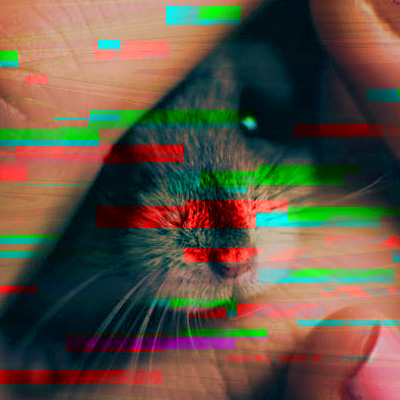

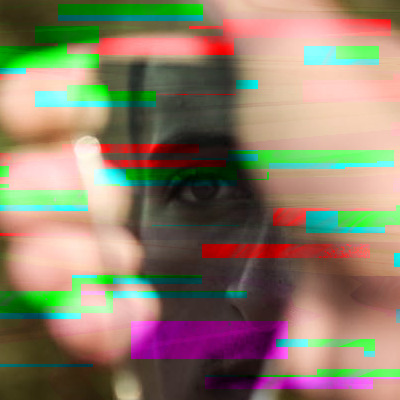



NANOWRIMO 2019: Caecus
Genre: supernatural horror/science fiction
Wordcount: 8291
Rating: T
Warnings: horror themes, robotic body horror, mind control, possession, gore, glitch effects, child death, major character death
Tropes: pining, slow burn, found family, one sided attraction, contagious “AI”, turned against their masters, haunted technology, killer robot, The Corruption, creepy basement, dwindling party
Synopsis: The Caecus Corporation was the first major business in the manufacturing of civilian used androids. When their competitors at Xinzha Industries created such complex programming in their androids that it seemed like they had instilled sentience, Caecus took an extremely dangerous and exaggerated risk to pass them by and create true sentience. Everyone hired by Caecus had vanished that night. Now, four years later, Xinzha has sent in a team of investigators to see what happened to an entire corporation and learn what they were working on.
Characters:
Anton - Our POV character, Anton is a 43 year old former detective, using his skills on the police force and via solo work to the best of Xinzha’s needs. He is trans, suffers from chronic fatigue, and stupidly in love with someone who could never love him back. He’s loyal, dedicated, and has a sharp eye that can quickly lead to an obsession.
Lan - A personal assistant android owned by Micah, Lan is 2 years old, bright blue, and shaped like a cartoon hamster. It relays messages, makes phone calls, sets up appointments, takes notes, and can do a lot of small tasks befitting of a hamster that can communicate and follow orders from humans.
Micah - The team leader. She’s 33 years old, has worked for many different organizations over the years but has been with Xinzha for 5 years, using her degree as a journalist paired with her experience to report on their findings as best she can to their superiors. She’s understanding, patient, and works as a mediator between strong personalities.
R - A generic household companion android created by Caecus and owned by Anton, it does basic to complex household chores and takes care of Anton’s physical health. It is 8 years old, has no sentience or real personality, and no memory of its life before Anton purchased it.
Sarah - The youngest of the group in both age and maturity, Sarah is a 28 year old robotic engineer with a hobby of amateur hacking. She was hired onto the investigative team to find out what they couldn’t through old systems and digging through android models. She’s spunky, gay, and altogether abrasive, but makes up for it with her intelligence and baking skills.
Playlist: Gay Robot Horror Story (recommend listening on shuffle)
Tag List: @detectivesebcas @inthemoonshadow @etjwrites @lordfenric
Read Here
Day 1 | Day 2 | Day 3 | Day 4 | Day 5
7 notes
·
View notes
Note
I just finished watching Zeiram for the fist time. I loved the grimy and dark aspect, I feel like it's kind of rare in toku. I plan to watch Zeiram 2 and Mechanical Violator Hakaider, but is there any other toku stuff with that kind of aesthetic?
You can pretty much count on Keita Amemiya’s work to have that kind of aesthetic to a greater or lesser degree. If you enjoy those films, I highly suggest his first Kamen Rider movie, Kamen Rider ZO.
It has some very grungy scenes and seems to be set in a city on the verge of collapse judging from the amount of junk left lying around, decaying buildings and rusting industrial complexes.

It also has some fairly nightmarish monster designs:

And one of the most bizarre and creepy main villains of all time:
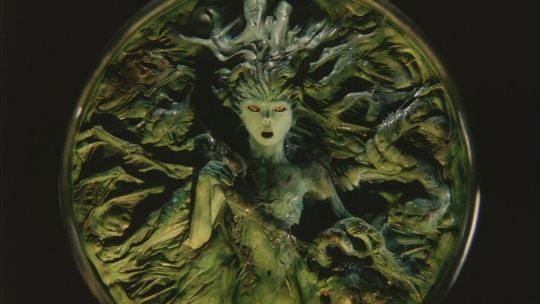
I cannot recommend this movie enough if you enjoyed Zeiram or Mechanical Violator Hakaider.
A lesser known film you also might enjoy is Masaki Kyomoto’s 1992 film Skull Soldier.

This is sort of based on/inspired by Shotaro Ishnomori’s manga The Skull Man and features a man named Tatsuya who creates a skull-themed alter ego to murder the corrupt corporate leaders and politicians responsible for the death of his loved ones. It’s a revenge flick staring a masked “hero” facing down the power players who pulls the strings behind society and meting out brutal punishment to them.
And I couldn’t help but mention Ketia Amemiya’s Garo series. It’s set in a slightly darker version of a world much like outs but one haunted with demonic creatures lurking on the edges waiting to posses the wicked and use them to feed on humanity.
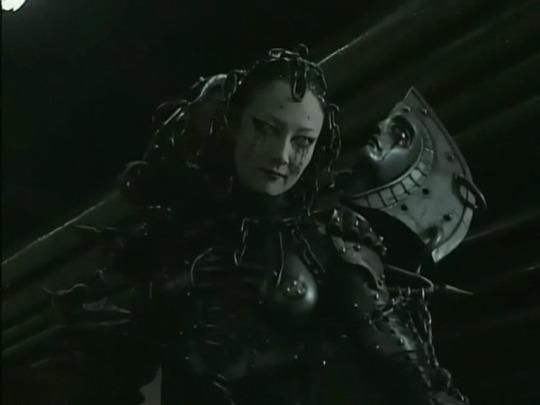
These Horrors are opposed by a hereditary group of mystic warriors known as the Makai Knights who use weapons and armor forged of soul metal to defeat their demonic foes. It’s a dark series with some very interesting design work and a mix of henshin hero tropes with J-Horror.
So, those are just a few recommendations if you want more along the same lines as what you have seen. A little further afield, you may also enjoy Kamen Rider Amazons (released on Amazon Prime in the US as Amazon Riders) which is a much darker tale of heroes and monsters than the standard Rider fare.
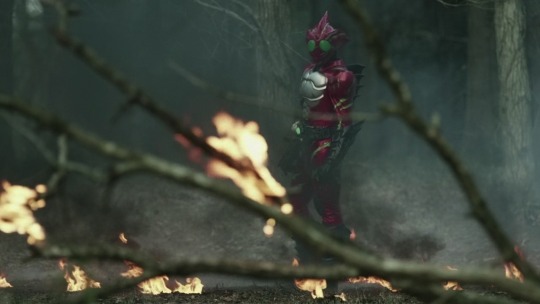
This show involves horrible half-human, cannibalistic monsters called Amazons created by a Pharmaceutical company in pursuit of regenerative medicines that have escaped and must be hunted down to prevent them from devouring humans. Two Amazons with mysterious backstories end up becoming heroes using special belts to transform and hold onto their humanity who fight to destroy the Amazons/Protect Humanity but have very different motivations and philosophies that inevitably lead them to opposite sides.
Thanks for the Question!
#Askbox Replies#Gritty Tokusatsu#Kamen Rider ZO#Kamen Rider Amazons#Skull Soldier#Garo#Keita Amemiya
154 notes
·
View notes
Text
Riverdale Characters as Tropes (Part II) ⭐️.

#9. Hiram Lodge (Main Trope: Fiction 500; Secondary Tropes: Big Bad, Evil Overlord, 0% Approval Rating, The Don, The Patriarch, Bad Boss, Corrupt Corporate Executive, Magnificent Bastard, Sharp Dressed Man, Badass In A Nice Suit, Man Of Wealth And Taste)




Fiction is loaded with Wish Fulfillment, and being rich enough to bend reality is one of them. These are characters whose wealth is almost impossible to quantify. More Money Than God is the bare minimum. Now this could happen in Real Life, like royalty who owned literally thousands of Pimped Out Dresses, or a man in India who built a private skyscraper for his family, staff, and fleet of cars, or Marcus Licinius Crassus, who had three times as much money as Bill Gates and personally funded the reconstruction of the Roman army. But in fiction, that's on the lower end of this scale. Stuff that generally does not qualify you to be a member of the Fiction 500: Big Fancy House, Cool Chair, Cool Boat, Cool Plane, Cool Car, Battle Butler, Maid Corps, or even simply having assets in the billions.
Stuff that generally does qualify you to be a member of the Fiction 500:
You have become a cultural symbol for absurd wealth, and the story leaves no doubt your reputation is completely justified.
You routinely spend money on a scale normal super-rich people might do once or twice in a lifetime, whether it be major investments or mere Conspicuous Consumption. If a real amount is given, even if in the hundreds of millions, or billions, it's chump change to these characters.
You personally fund projects associated with major corporations, governments, aliens, etc. This includes Crimefighting with Cash.
You have the resources of a global superpower without yourself ruling a global superpower.
You personally fund projects that apparently break the rules of physics using only wealth and the Rule of Cool, or sometimes Rule of Funny. In other words, Screw The Universe; I Have Money! But if some other convenient fictional trope makes something possible, it doesn't count. You don't buy sound in space when Space Is Noisy. It's not impressive to have Infinite Supplies when everyone else does. Building a Humongous Mechais not noteworthy when any random scientist can make five in a weekend.
You're surprised to discover your latest project's market success has not increased your net income because you have a monopoly on the product it's competing with.
You can do any of the above without leaving a paper trail or an electronic footprint. Many of these Fiction 500 rich characters operate either clandestinely or under a secret identity, especially if they are Crimefighting with Cash, The Chess Master or Evil Mastermind types. They must have methods for secretly diverting hundreds of millions or billions of dollars to their schemes (like building that army of Mooks, Elaborate Underground Base, Bat Cave, or Batmobile) while making it seem like a legit and legal expenditure or keeping it out of the books. It should be noted that even if a character uses their personal fortune, these transactions would still typically have to show up somewhere when tax time comes.
Now personality doesn't really matter. You could be a Rich Bitch or Uncle Pennybags. You could be a law abiding citizen and even be Batman, or instead think you can screw the rules. Name is based on the top 500 grossing companies annually compiled by "Fortune" Magazine. And despite the name implying otherwise, there can be any number of characters here. Also, there is almost no way to objectively rank them, although Forbes tries with their "Fictional 15" list. Compare Arbitrarily Large Bank Account, Conspicuous Consumption, Undisclosed Funds, Organization with Unlimited Funding, and N.G.O. Superpower. For real people who are considered the richest in the world, see The World's Billionaires, an annual ranking made by Forbes (which has its own article on The Other Wiki, BTW).

The cause of all bad happenings in a story. A Big Bad could be a character with Evil Plans or it could be an omnipresent situation, such as a comet heading towards the Earth. In a serial story, the Big Bad exerts an effect across a number of episodes, even an entire season. This trope is not a catch-all term for the biggest, ugliest villain of any given story. In fact, it doesn't have to be a villain at all, as we just said. If it is a villain, though, it should be identified correctly; the badass leader of the outlaw gang that causes the most personal trouble is not the Big Bad. The railroad tycoon who is using the gang as muscle is the Big Bad. The Man Behind the Manis very common for this trope, leaving the reveal of the big bad as The Chessmaster behind it all and proving themselves far more clever and resourceful than the Villain of the Week. Sometimes the Big Bad is the grand enemy of an entire franchise as an Overarching Villain. At other times, the Big Bad is an Arc Villain who causes trouble for a period of time only to be replaced by another Big Bad. When you look at a season-long story or a major Story Arc and you can identify one problem being the cause of everything, that is the Big Bad. In its most general form, a Big Bad will be at the center of the Myth Arc rather than just any Story Arc. The term "Big Bad" was popularized in Buffy the Vampire Slayer. It was characteristic of Buffy's Big Bads for their identity or nature, or even the fact that they are the Big Bad at all, to remain unclear for a considerable time. Occasionally, characters would even refer to themselves as "the Big Bad". Whether or not they were, though, this is a Big Bad Wannabe. The structure of Buffy placed the Big Bad as being crucial to the Half-Arc Season, half the episodes are filler dealing with unrelated enemies while the other half involved the ongoing Myth Arc with the Big Bad. Each season can easily be defined by who the Big Bad was. If a show has a series of Big Bad jeopardies, they can function like a series of Monsters of the Week that take more than one week to finish off. If there is a Legion of Doom, you can expect the Big Bad to be involved somehow. They're probably sorted by power, with the strongest for last, following the Sorting Algorithm of Evil. Evil Overlord, Diabolical Mastermind, The Chessmaster, Arch-Enemy, The Man Behind the Man, and often Manipulative Bastard are specific types of villains who are liable to show up as Big Bads. If they're a Magnificent Bastard or Hero Killer, the good guys are in big trouble. The heroic counterpart of this character is the Big Good, who will very often be the focus of this character's attention over The Hero at the beginning of a series. If a work of fiction is conspicuously lacking a Big Bad, it may be a case of No Antagonist. See also Big Bad Duumvirate for two (or more) Big Bads working together. Sometimes a Big Bad will get their start as a servant to another villain — if that's the case, they're a Dragon Ascendant. If the character who fills the role of Big Bad in most meaningful ways is nominally subordinate to someone else (someone significantly less menacing by comparison), they are a Dragon-in-Chief. If the story has many Big Bads at once who don't work together, see Big Bad Ensemble. The Big Bad Shuffle occurs when there are multiple candidates for the Big Bad position. If the Big Bad doesn't start out as bad but develops over the course of the story, it's Big Bad Slippage. If the Big Bad of one section of a work doesn't die on being defeated and stays around as a character in a different plot role (reformed or not), that's Ex-Big Bad. The Big Bad of a story is not always the most powerful or oldest existing evil force. Perhaps an evil presence along the lines of an Eldritch Abominationovershadows the work's setting, but is mainly divorced from the story's events — that would be the Greater-Scope Villain.
#10. Hermione Lodge (Main Trope: Femme Fatale; Secondary Tropes: Iron Lady, Proper Lady, Spicy Latina, Gold Digger, Corrupt Politician, Grande Dame, Silk Hiding Steel, The Woman Wearing The Queenly Mask, God Save Us From The Queen, Sugar-And-Ice-Personality)
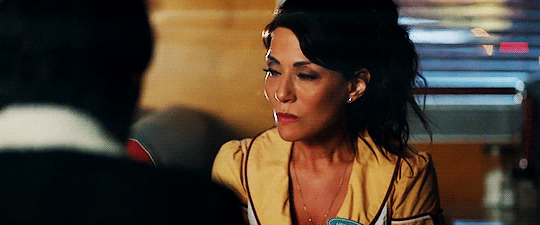



First, she turns you on. Then, she turns on you. The typical client in a Hardboiled Detective story (French for "fatal woman," idiomatically "woman to die for"). You know the type. Dressed all in black with legs up to here and shady motives, she slinksinto the PI's office, sometimes holding a cigarette on a long, long holder, saying "Oh, Mr. Rockhammer, you're the only one who can help me find out who killed my extremely wealthy husband." Did she do it? Do I care? Wait, where'd that saxophone music come from? Whatever her story is, whether she did it or not, she's definitely keeping some secrets. The Femme Fatale is sexy and she knows it. Made famous by Film Noir and hard-boiled detective stories, she manipulates and confuses The Hero with her undeniable aura of sexiness and danger. Unlike the virginal and sweet Damsel in Distress (or possibly Action Girl), the Femme Fatale exploits with everything she's got to wrap men around her finger. (In some eras, use of make-up is a tell-tale sign.) He knows that she's walking trouble and knows much more about the bad guys than she should, but damn it if he can't resist her feminine wiles. If the Femme Fatale is vying for the hero's romantic attentions she will likely have a sweeter and purer rival. The hero might decide that she's not worth the trouble she causes, but if he doesn't, then they might become an Outlaw Couple. While related to The Vamp, the Femme Fatale is not just any seductress; she has a distinct look and feel. The main distinction is how she presents herself. If you know she's dangerous from the start, but she's sexy enough that you don't care, she's likely a Femme Fatale. On a lesser note, the Femme Fatale generally uses sensuality instead of upfront sexual advances. She may implythat you could have sex later, but she'll never promise it, not even say it—that would decrease her air of mystery and power. Her wiles may include apparent helplessness and distress, and appeals to the man's greed, desire for revenge, or gullibility, as well as the implication of possible romance or sexual rewards, while The Vamp more often reliances on raunchy sex or the promise of it sometime real soon. The Femme Fatale is generally villainous, and heroic exceptions—in an artificial context to snare the bad guy—are closer to Heroic Seductress. Frequently, she is a Wild Card, changing sides according to her own desires and goals; she does not often go through a High-Heel–Face Turn. If she's actually a kind-hearted person who puts on this facade just for fun, this is Trickster Girlfriend. She's often the Lady in Red but possibly dressed like everyone else so as to not be Colour-Coded for Your Convenience. The Femme Fatale is one of the female character types that can often be seen wearing High Class Gloves, especially in conjunction with her sexy evening gowns, and, during the daytime (particularly in old Film Noir movies), is often seen wearing a "fascinator" or "pillbox" hat with a partial- or full-face veil. She's definitely not above using the Kiss of Distraction. If she can fight, too, then she's really going to be trouble. Subtrope of Manipulative Bastard. The younger version of this is the Fille Fatale. The spy version of this is Femme Fatale Spy.
#11. FP Jones (Main Trope: The Casanova; Secondary Tropes: Action Dad, The Alcoholic, Alcoholic Parent, The Good King, The Quarterback, The Sheriff, Dirty Cop, Reasonable Authority Figure, Jaded Washout)
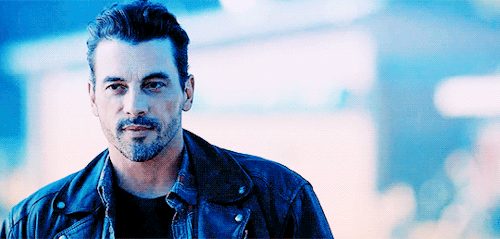



The (legal, and less repulsive than the better-known types) sexual predator — a man who relentlessly pursues, lands, loves, and then abandons members of the opposite sex, a skill bestowed upon him to demonstrate what a badass he is. Sometimes comic, sometimes a monster, always successful, this character leaves behind a string of broken hearts, and occasional vows ofrevenge that are rarely fulfilled. Casanova's only motivation is indulging his lust and desire, sating them with the bodies of his conquests.
This trope tends to suffer from three double standards when portrayed in media;
The first is that the Casanova is always male, given that women are usually shamed for having an active sex life. The comparatively rarer female version is an "aphrodite", but she’ll likely be portrayed as an evil character who exploits her sexuality to manipulate innocent men. The womanizing skills of the Casanova, on the other hand, will almost always be granted to him to make him look like a champion.
This trope also applies almost exclusively to straight men, given that queer people with an active sex life are usually villainized in media. Meanwhile, straight men get to be portrayed as badasses for having multiple women at their beck and call. Bisexuals or demisexuals are even rarer, though not unheard of; for example Oberyn Martell.
The Casanova trope is also usually only applied to Caucasian/white men. Non-white men having, expressing or giving into their sexual desires is often portrayed negatively or Played for Laughs. Also, while white male Casanovas being with non-white women is generally portrayed as fine, men of color are often limited in a work to dating, having sex, marrying or even flirting only with women of the same nationality or skin color as them. If they do have a romantic relationship or sexual encounter with a woman of a different nationality or skin-color, it is usually held in scorn by some in-universe (and sometimes out-of-universe, unfortunately).
Contrast with the unsuccessful Casanova Wannabe. Compare with the inexplicable Kavorka Man. A guy who gets the girls like a Casanova, but unintentionally, is a Chick Magnet. If kind-hearted, may overlap with Chivalrous Pervert. The Charmer is equally charming but less sex-obsessed. If they really get around but want to settle down, it's Looking for Love in All the Wrong Places. A Handsome Lech has more negative connotations and a sparser scorecard than the Casanova. The trope is named for Giacomo Casanova (1725-1798), a soldier, spy, diplomat, adventurer, and librarian whose extensive but unreliable autobiography (in which he almost literally described himself as God's Gift to Womennote ) established his eternal fame as a lover. It should be noted that the historical Casanova was closer to a Chivalrous Pervert who really was looking for love... just with women who were locked in loveless political marriages — and also gained his successes famously ugly. (Definitely◊ he was no Heath Ledger◊.) Interesting and prone to be noted for his modern wannabes, he was one of the few 18th century men who bathed almost dailyand asked the same thing from his partners. Many films, TV movies and TV mini-series are named for and based on that person. The best known are Fellini's 1976 film, the 2005 film starring Heath Ledger, and the 2005 BBC drama mini-series starring David Tennant. The latter is considered one of the more faithful adaptations of Casanova's memoirs, while Fellini's... wasn't. For the juvenile version — all of the above without the sex — see Kid-anova. Contrast the Serial Romeo (who falls in love with a long succession of women, one at a time and for reasonable periods). If the guy is actually only rumored to be a Casanova and has no evidence onscreen, it's the Urban Legend Love Life. If he develops feelings for one of his conquests (or someone who refuses him), he's a Ladykiller in Love. See More Friends, More Benefits for when the mechanics of a game encourage the player character to act this way. Note: It should be mentioned that even after the affairs were over, most of Casanova's ex-lovers still liked him, and he was reputedly quite the gentleman. This trope would probably fit (the fictional) Don Juan better.
#12. Gladys Jones (Main Trope: Evil Matriarch; Secondary Tropes: Dark Is Evil, Parental Abandonment, Action Mom, Drugs Are Bad, Bitch In Sheeps Clothing, Bait The Dog)




A mother is one of the most central figures that a character can have growing up, and her influence can have an impact on that character even as an adult. If the character is lucky, that mother will be a loving one, and if he or she is really lucky, she'll be an Action Mom who can kick ass and take names if the character is ever threatened. But if the character is really unlucky and isn't suffering from Parental Abandonment, the character's mother will be an Evil Matriarch and chances are, she will make that character's life a living hell.
The Evil Matriarch comes in two forms:
Comedic: Usually used in the Dom Com, this variety is usually the mother of one of the two parents on the show who comes to visit every so often, and someone on the cast dreads it. Usually (though not always) this variety of Evil Matriarch is a meddling parent, often to an irrational extreme. Classically, this is a Mother-in-Law situation, but from time to time, the kids themselves, or even the child of the mother is the one that dreads it. In some cases, everyone hates the Evil Matriarch, like in Malcolm in the Middle where everyone dreads Lois's mother coming to visit. In other cases, her visit is appreciated by everyone but the daughter or son of the Evil Matriarch, like in Family Ties, where the matriarch is evil because her daughter feels she can't live up to mom's perfection. Expect this variety of Evil Matriarch to have Power Hair and other Fashionable Evil.
Dramatic: This variety, which shows up in more dramatic media, is truly evil in a traditional sense, and is one of the worst villains one can face, especially if one of the Heroes or Love Interests is one of her children (or if she's married into his or her family as a stepmother). Many such Evil Matriarchs are completely convinced that they, and only they, know what's best for their children, and can be very controlling, manipulative, and perfectly willing to do anything they deem necessary for their children's sake, no matter how evil or destructive it may be. The most vicious examples of this variety of Evil Matriarch despise their children (or at least the one they've singled out as The Unfavorite) and are often physically or emotionally abusive towards them, and many of them are not above Offing the Offspring.
If she's not entirely human, then expect her to be a Hive Queen. If she is also the Queen, expect God Save Us from the Queen!. The Spear Counterpart of this character type is Archnemesis Dad. The inversion is Antagonistic Offspring. See Abusive Parents and Parental Neglect for the more mundane versions. See Offing the Offspring and/or Matricide for what this might lead to if the kids fight back. If it's not your mother but her replacement who's making your life a living Hell, see Wicked Stepmother.
#13. Hal Cooper (Main Trope: Ax-Crazy; Secondary Tropes: Serial Killer, The Bluebeard, Malevolent Masked Man, Knight Templar Parent, Insane Equals Violent, Light Is Not Good, Icy Blue Eyes)




An "ax-crazy" character is someone who is psychologically unstable and presents a clear and present danger to others. They are capable of extreme violence, whether carried out with a Slasher Smile, insane laughter, speaking in a Creepy Monotone, or out and out murderous rage, and with no way of knowing just what will set them off, which makes them extremely frightening to deal with. This mainly differentiates them from other eccentric characters who may themselves be obsessive, weird or seemingly crazy, but use this condition hand in hand with doing good, or at least not being in the way. However, some formerly established heroes can go through an episode of ax-craziness and still retain their heroic mantle. Despite the title, ax-crazies aren't limited to wielding axes. Any instrument of death will do, from knives or straight razors to swords to chainsaws and beyond. A good number of other ax-crazies are also Trigger Happy, preferring either Hand Cannons that blow really big holes in people, or weapons that allow them to kill lots of people with reckless abandon, such as any automatic weapon. And for the truly psychopathic among psychopaths for whom the above just won't do, a heaping helping of high explosives or a good-sized flamethrower will do quite nicely. Sometimes, they don't even need weapons and just use magic spells or other powers if they have them. There are also plenty who are just as happy to beat people into an unrecognizable pulp-like mass with their bare hands. It is rare for a truly Ax-Crazy character to be a protagonist, largely due to it being a Sub-Trope of Obviously Evil, and most Ax-Crazy characters usually are Obviously Evil. They're common as the antagonists in Superhero and Crime and Punishment Series, often serving as a Psycho for Hire. If they area protagonist, they will most certainly be a Nominal Hero or Villain Protagonist. The difference between them and Blood Knight is this trope is all about killing while the Blood Knight is only interested in fighting. There is, of course, plenty of room for overlap. See also Insane Equals Violent, The Butcher, The Dreaded, Mad Bomber, Cute and Psycho, Blood Knight, Psycho for Hire, Yandere, The Sociopath, Mad Doctor, Pyro Maniac, Hair-Trigger Temper, Colonel Kilgore, General Ripper, Insane Admiral, and Sociopathic Soldier. Compare and contrast Mama Bear, Papa Wolf, Big Brother Instinct, and Violently Protective Girlfriend, who may be capable of temporary Ax-Craziness when their kids, younger sibling(s) or mate are under threat, but are often played sympathetically. Contrast Suicidal Pacifism, when a character never, ever resorts to violence even if it is necessary; and Extreme Doormat, when a character is a complete pushover unable to fight back. The canonical Character Alignment for most Ax-Crazy characters is Chaotic or Neutral Evil, though a couple of Chaotic Neutral examples exist. Sometimes The Unfettered, depending on whether they feel freed or enslaved by their bloodlust. At least one or more examples are an Anti-Villian, where you kinda feel bad for them since their enemies pushed them too far with actions such as killing their family, their friends, or even the enemies trying to kill them, making them go Ax-Crazy. It's very common to be Played for Drama, usually as either the Big Bad, or The Dragon to the the Big Bad. It is far less common, but not unheard of, for it to be Played for Laughs; this is most likely to be seen in a Sadist Show, especially one featuring a lot of Comedic Sociopathy and/or heavy Satire, with it appearing most often in humorous comic strips, Anime, Web Originalworks, and the more adult-oriented Western Animation of the Renaissanceand Millennium periods. A very large number of pages link to this when they should link to An Axe to Grind. This page is about violent crazy people, not people whose Weapon of Choice is an axe (despite the potential for overlap).
#14. Alice Cooper (Main Trope: Ice Queen; Secondary Tropes: Education Mama, Control Freak, Former Teen Rebel, Female Misogynist, The Fundamentalist, Holier Than Thou)
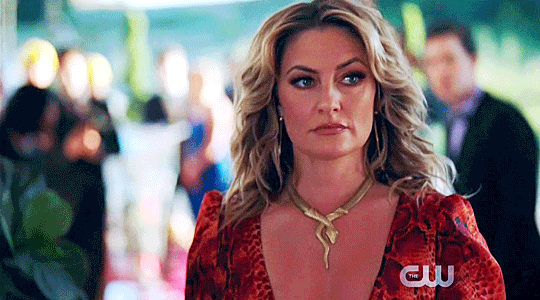



Much like a Tomboy, the Ice Queen is a major character archetype which is somewhat hard to define. Her signature characteristic is that she is cold; the ambiguity comes from what "cold" means. She has a cold heart, a frosty demeanor; she attracts but will never be wooed. Scorned men are likely to call their failed conquests Ice Queens (after all, normal women would have given in to them). Due to the Double Standard, the Ice Queen is (almost) Always Female. The Ice Queen is considered dangerous to love because she will not (or cannot) love back. She's not much for friendship either, preferring to be alone. Situations where an Ice Queen "thaws" and learns to enjoy the company of others are so common that they have their own trope. Being an Ice Queen is purely about personality; having ice-related abilities does not make a character an Ice Queen. That said, it's not at all uncommon for a character with a cold personality to be given cold powers. Not to be confused with a character who has a royal title associated with ice or snow, though they two may overlap (and often do in more magical settings). An Ice Queen requires at least one "cold" personality trait that gets her labeled as an Ice Queen.
#15. Fred Andrews (Main Trope: The Heart; Secondary Tropes: Like Father, Like Son, Betty And Veronica, Family Man, Standard 50′s Father, The Conscience, Big Good, Good Parents)
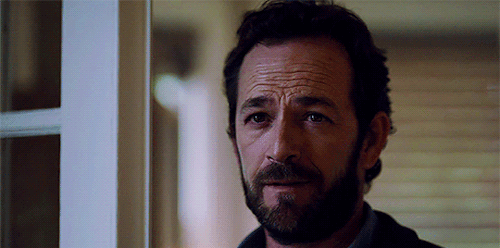
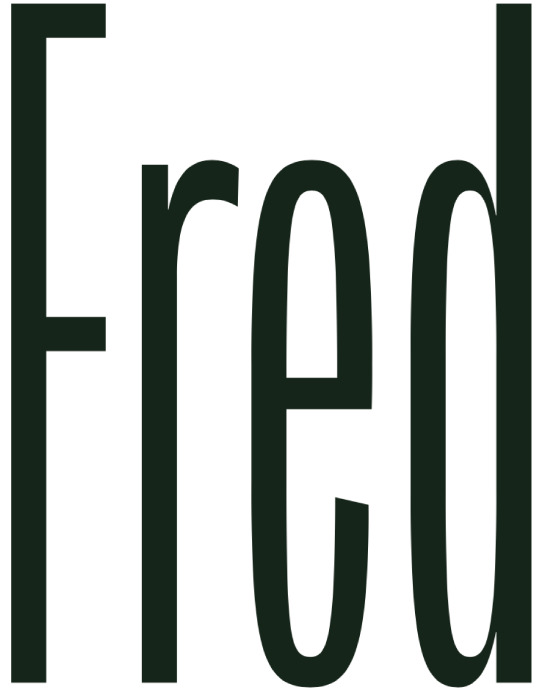
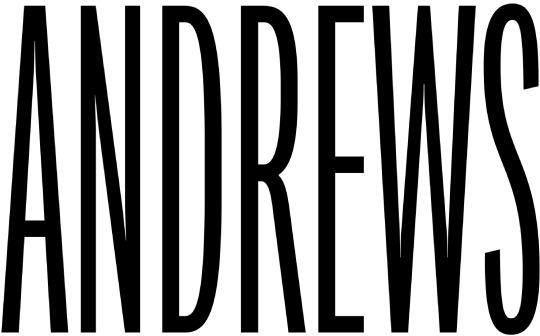

The Heart is a personality aspect that comes up in just about any ensemble. Their personality is based on getting the others to recognize that there are more things at stake than their personal vendettas, especially if The Team is becoming a group of Knights Templar, or if any individual becomes a Well-Intentioned Extremist. This is the person who will argue and fight against the justification of "I Did What I Had to Do". Quite often The Heart character will also be an All-Loving Hero, where they go out of their way to help all of the little people. Within the ensemble this character will most often be merged with the role of The Chick. Like The Hero and The Leader, they aren't one and the same, but they often overlap since they are a good fit. If The Chick is usually a non-action character, having personality traits of The Heart will give them more to do, especially if the team is always at each other's throats. For the same reason, The Heart can also be The Hero (in the case of the Magnetic Hero) or The Leader, as their leadership skills keep the team from falling apart. May be part of the Command Roster. The character whose death or loss is most likely to trigger Losing the Team Spirit. Where Elemental Powers come into play, other characters may be in for a Heart Beatdown. Due to their usual relative introversion, and tendencies towards pacifism (whether technical or actual), this character is sadly often C-List Fodder and a prime target for a single-character (rather than the entire show) version of The Firefly Effect. Many series will start out with a Heart character, but the writers will begin to view them as boring and impossible to write for, so they end up being either Put on a Bus/kept Out of Focus at best, or Character Death at worst. This also tends to happen when studio executives want to replace the character with a more talented or physically attractive character, in an attempt to boost ratings. Given that said characters are usually sweet types (and peacekeepers), this also tends to seriously anger a certain portion of the fanbase, but because the studio executives care more about ratings than they do about upsetting what is normally a minority, the character will stay dead. If fan outrage is sufficiently vocal, and the executives haven't managed to completely alienate the actor, then the character may come back periodically as a ghost or a clone. Compare The Face who does the talking on The Team. See also Restored My Faith in Humanity and Morality Chain. Compare The Conscience, Token Good Teammate. Not to be confused with What Kind of Lame Power Is Heart, Anyway? or Heart Is an Awesome Power though this trope often overlaps with them. Contrast with Lack of Empathy.
#16. Mary Andrews (Main Trope: Fiery Redhead; Secondary Tropes: Missing Mom, Mama Bear, Heroes Want Redheads, Almighty Mom, Brutal Honesty)




A Fiery Redhead is a red-haired character who is strong, Hot-Blooded, out going, usually outspoken, and (if a love interest) often female. She has a big personality and she's not afraid to use it. Whatever you do, don't get on her bad side, or there will be hell to pay. (Especially if powers of personality and/or elements are present: she likes Playing with Fire. Thus, in a Four-Temperament Ensemble, expect her to be Choleric.) She will be unladylike unless it's the case of a redheaded Spirited Young Lady. She might be One of the Boys, a tomboy, or a lad-ette. Heroes do like redheads after all. This hair-color stereotype probably developed since red hair was associated with the Irish and Scottish (and before this, Horny Vikings) for a long time, and they ended up being stereotyped as loud, strong, and passionate (see the Fighting Irish and Violent Glaswegian tropes for more info on that). On the other hand, it's even found in Eastern Europe where any association would have been with Russians or Swedes, and these are nationalities not generally stereotyped as hotheaded. In addition to this, it extends even into ancient texts from Babylonian and Scandinavian Oral Historian. In the Prose Edda, Odin is depicted as blonde, green-eyed, cool, and calculating—while his son, Thor, is a redheaded, blue-eyed (something of an omen of war/perfection in Scandinavian culture) fire-breathing stereotypical Viking (the raiding kind) who treats Earth as a giant freshman mixer. Gilgamesh is also a Fiery Redhead with blue eyes whose duties include being a good precursor to Thor, for the most part—though with more reservation and a cooling trend near the end of his life (this makes both an eerie paradigm of Fiery Redheads at the creation of their respective people's writings). The whole "red-haired, blue-eyed" thing is usually split in Japan between two people. Although real redheads can have tempers like everyone else, this trait is exaggerated in fiction. Also, they can have Green Eyes and this association is also exaggerated in fiction. Compare Heroes Want Redheads, Dark-Skinned Redhead, Evil Redhead, Rose-Haired Sweetie, Red-Headed Stepchild, Redheads Are Uncool, Redheaded Hero. In anime, could be a Shana Clone. If you have a blonde, a brunette, and a redhead in close proximity (i.e. in the main cast), it's Blonde, Brunette, Redhead. Contrast Shy Blue-Haired Girl for Red Oni, Blue Oni and Eerie Pale-Skinned Brunette for the realistic opposite hair color and personality. Please do not confuse this with a redhead being literally fiery, or having literal fiery head, although these tropes may overlap. And a red who's literally firey does have their hair color fit their elemental powers. See also Red Is Violent (in this case, the hair color).
#17. Clifford Blossom (Main Trope: Abusive Dad; Secondary Tropes: Archnemesis Dad, Faux Affably Evil, Offing The Offspring, Mean Boss)



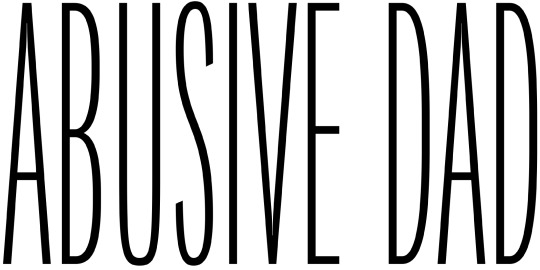
Parents are supposed to be the protectors of children, but these parents are either so damaged themselves that they can't do the job, greedy or villainous to the point that they never had any interest in doing the job properly, or would rather use the child as a means to an end. Sometimes they're just sadistic assholes. This includes parents who are emotionally, verbally, physically, or mentally abusive, or who neglectfully allow their children to be abused by others if they don't abuse the child themselves; sexual abuse is typically treated as a special kind of evil. Sometimes, the abuse at the hands of their parents becomes a Freudian Excuse for a villain. Other times, the character manages to not grow up broken, bitter, and hateful, and instead a different and better person than the upbringing would incline one to think. Troubling Unchildlike Behavior is often a tell-tale sign that things are not right at home. Abusive Parents are commonplace in fairy tales and Classical Mythologywhich makes this trope Older Than Feudalism. Note that The Brothers Grimm, when they collected European fairy tales, were uncomfortable with the idea of Abusive Parents and so frequently changed the Abusive Parents in the traditional stories into abusive step parents. Sometimes, a parent will go as far as to kill the child in question, in which case this is Offing the Offspring. In other cases, the parent's abuse occasionally drives the offspring to snap, commit Revenge and finally kill them, thus becoming a Self-Made Orphan. Calling the Old Man Out occurs when a fed-up child retaliates with a "The Reason You Suck" Speech. If the child gets out of the broken family and forms healthy friendships, but reacts badly when their abusive parents show up again, well, Friends Are Chosen, Family Aren't. Bear in mind that not everyone agrees on the line between actual abuse and merely heavy-handed parenting (or even normal parenting). Is Moving the Goalposts merely inspiring the child to achieve more, or the most insidious form of abuse to instill mistrust and paranoia to the children? Some include spanking as abuse; others think it's appropriate given certain guidelines. Some believe it's okay to make a kid go without a meal (they won't starve that easily); others disagree. Making a kid miss a friend's birthday sleepover — is that emotional abuse? Raising a kid without exposure to TV? Telling your daughter she's getting fat? A little friendly name-calling? There's a line here somewhere, but not everyone agrees on where it is. If a parent has just dumped the child, for whatever reason, that's Parental Abandonment; if they aren't paying attention, that's Parental Neglect. If the parents refuse to discipline their kids, they are Pushover Parents. Contrast Mama Bear or Papa Wolf (where others abuse the children and the parents abuse the abusers), and the more extreme variant of Knight Templar Parent, where the abusive parent is violently overprotective. Abusive Precursors can be considered this on a metaphorical level. See Hilariously Abusive Childhood for when this is cranked up to absurd levels and played for laughs. Black Comedy is often connected in the comedic aspect of it, and a Big, Screwed-Up Family may be involved if it is adult comedy. In keeping with the above note, some may call the show on it and say Dude, Not Funny!. See Evil Matriarch and Archnemesis Dad for characters who are beyond abusiveand outright evil. For parents who are mostly abused by their children, see Pushover Parents. While they do not have to be the child's actual, technical parents to be part of this trope, it's pretty important that they are closely related and live together, like a Wicked Stepmother or an Evil Uncle taking care of the Parentally Deprived. After all, it's much more disgusting that somebody related to the child could bring themselves to hurt them, rather than a mere foster family. The polar opposite, of course, are Good Parents.
#18. Penelope Blossom (Main Trope: Black Widow; Secondary Tropes: Evil Redhead, Widow Woman, Straw Feminist, The Vamp, High Class Call Girl, Dark Mistress)




The man-eater, the woman whose husbands/Love Interests keep on dying. Usually, a Black Widow is a cross between a Con Artist and a Serial Killer, a woman who seduces, marries, and then murders men for their money, always using a different name and identity each time to keep the police and her intended victims from twigging to her real identity. She's very much a highly successful vamp. Black Widows' methods may vary, but poisoning is often favored: it doesn't demand superior strength or leave obvious marks, and it's traditional for wives to do the cooking for their husbands. Also, many types of poisoning can have symptoms similar to those of common illnesses, which makes it easier for a Black Widow to collect life insurance money (a very common motivation). There are too many Truth in Television instances to count. Occasionally there are more nefarious methods. The name "black widow" comes from the official FBI designation for this kind of killer and from the black widow spider, which is so named because of the occasional habit of female black widow spiders (particularly the Australian redback spiders and the southern black widows) to devour their mates after mating. For this reason the trope may be paired with Arachnid Appearance and Attire to really drive the spider metaphor home. A Sub-Trope of Sleeping Their Way to the Top, Murder in the Family, and Gold Digger (this one prefers to kill her Meal Ticket instead of living with him). A Sister Trope to The Bluebeard (the Spear Counterpart). Compare Yandere, Comforting the Widow, Widow Woman (for other widow tropes), Will and Inheritance Tropes and Cartwright Curse. When a pregnancy is involved, this intersects with Conceive and Kill. See also Literal Maneater, which is an actual monster that uses the disguise of a woman to lure in its prey.
Look out for Part III!
10 notes
·
View notes
Text
Can putting Money back in People´s Pockets Reverse Austerity in Spain?
Pablo Iglesias, the leader of the Unidas Podemos (UP) party, is very clear about why he has gone into coalition government with the Spanish Labour party (PSOE). The austerity measures imposed on the people of Spain by the government of Mariano Rajoy fell disproportionally on the working and middle classes. Not everything will be possible to reverse. Membership of the EU requires adherence to the budgetary targets agreed with the commission but together we can make the the higher earners and large companies pay their share.
Under the terms of a fifty page document titled “Progressive Coalition. A new agreement for Spain” (’‘Coalición progresista. Un nuevo acuerdo para España”), out will go the so called labour reforms of Mariano Rajoy which favoured employers. Instead will return job protection and an end the casualisation of labour. Central bargaining and a role for trade unions is back. The minimum wage will be raised by as much as 60% over time and taxes on those earning over €130,000 increased. Both the Tobin Tax on financial transactions and the Google/Amazon Tax on sales made in Spain (as opposed to earnings declared after deductions) will be levyed. There is new money for health and education, both of which were significantly reduced under Rajoy´s austerity regime. There will be action on climate change with targets set in legislation. Plus more funding for child care places and extending parental leave.
While Podemos have got most of what they wanted in the social arena, this came at the expense of shelving their pre election proposals in the areas of energy and banking. The proposal to retain the bailed out bank Bankia in public ownership as a state investment vehicle is gone. As is the proposal for a public energy company to tackle the oligopolistic practices of the energy companies. Spain has some of the highest consumer electricity prices in Europe. Instead the Banks and Energy companies will pay a higher Corporation Tax rate of 18%. The minimum rate of Corporation tax in Spain is 15%.
The question of Sareb, Spain´s bad bank, is unclear. In contrast to Nama, the Spanish authorities have been anything but friendly towards the capital on offer from Private Equity firms. They have been slow to package loans into a form attractive to these overseas investors or to match the fiscal measures on offer elsewhere. Housing is one of the hot button issues for Podemos voters but it is a decentralised function requiring cooperation from regional authorities not under their control. Rent controls and limitation of tourist apartments already apply in some places. These could be extended nationally as well as further beefing up the already substantial rights that tenants currently enjoy.
In general, the Spanish pay very little attention to what happens in Portugal and the Portuguese even less to the affairs of their Iberian neighbour. In recent times though, it is impossible to ignore the success of their three party left alliance, known disparagingly in Lisbon as the geringonça (contraption). Running on an anti austerity platform in 2015, António Costa formed a minority Socialist government supported by the Left Bloc (BE) and the Communist party (PCP). He was reelected late last year, still short of a majority but with an increase in seats. Costa´s strategy was to put money back in people´s pockets so more money went towards pensions, social protection, the minimum wage and public service pay. Notably however, he also paid attention to the supply side with a reduction in both personal and corporate taxes. Important investments were made in infrastructure and incentives provided for small business to grow.
With measures near to the ground, Socialism in both Spain and Portugal is showing itself capable of resisting the so called Pasokification, a decline in support of centre left social democratic political parties in Europe, often soaked up by nationalist or populist alternatives. Both countries have naturally left leaning majorities, which will come out to vote for them unless their party is corrupt or incompetent. The left has struggled to find an answer to the challenge of globalisation but now there is a new confidence as economists such as Mariana Mazzucato and Thomas Piketty have provided the intellectual armory to combat the neo-liberal trope of the market, lower taxation and cutting red tape. South of the Pyrenees as least, the primary role of the state is back.
That is the challenge now for Pedro Sánchez and Pablo Iglesias. The doubt with them is always that they are too easily detached, too professorial. They have other interests, particularly in the international arena. Do they have the stomach for the kind of blocking and tacking required to get complex legislation over the line? The other side of the Cortes Generales is represented by the Partido Popular, Vox and the greatly weakened Ciudadanos. For them España is everything, it is theirs by right and they want it given back, pronto. Expect them to move from the pantomime invective of this week to a more low key legalistic strategy, formulating procedural objections and generally obstructing progress. Ironically, this could have the opposite effect of solidifying the Progressive Coalition and increasing their determination not to fail. The left succeeds when it is not at war with itself. Many are already predicting that this “frankenstein government” won´t last. They will need a good start. We will know a lot more after the first hundred days.
Joe Haslam is an Associate Professor with the IE School of Global & Public Affairs at IE University in Madrid.
0 notes
Text
KING

“Whites, it must frankly be said, are not putting in a similar mass effort to re-educate themselves out of their racial ignorance. It is an aspect of their sense of superiority that the white people of America believe they have so little to learn...resonant resolutions about brotherhood fall pleasantly on the ear, but for the Negro there is a credibility gap he cannot overlook.” - MLK Jr. 1967
King said this 52 years ago. 52 collective years have passed that has included hundreds of deaths by the hands of police, multiple communities displaced by gentrification, schools re-segregated, the continued disproportionate imprisonment of black and brown people, an ever increasing household wealth inequality gap, families separated at the southern border and the election of one a man who adopted Bull Connor’s political platform like no other, and here we are still.
By definition, “ignorance” describes a state of not knowing. In a large sense, it is innocent – after all, there are many things that one does not know. However, what makes the racial ignorance King was speaking to here particularly insidious is white America’s refusal to acknowledge the historic and present oppression of non-white folks and their participation in it, complicit or otherwise. Again, the ignorance here is intentional and obstinate. Terms like the “race card”, “race-baiter”, “colorblind”, and similar terms are all attempts to push the fallacious narrative that anti-blackness is a trope, a played out, tired refrain in the cacophonous chorus of victim-hood.
Practically, this phenomenon shows up in interesting ways at work. Diversity and Inclusion programs, led by white people, drive discussions centered around white comfort. New language is created to ignore the reality of systemic racism within the workplace. “Diversity of thought” is the ultimate ideal - effectively justifying mostly white, mostly male leadership. Gender is the shiniest silver medal with no attempt at inter-sectional engagement, erasing non-white identities and the history attached. Unconscious bias training is the cure-all, driving the presumption that the majority is not intentionally bigoted. In the best scenarios, attempts to bring these truths to light are met with soft nods, a commitment to continued dialogue and little else. This does little for those in the minority who continue to see and be the witnesses and recipients of inequitable treatment.
America’s response to being presented one of the greatest speakers, leaders and minds of modern history was harassment from the FBI, assault and imprisonment by police, and murder. Despite this, in a world wrought by so much chaos, corruption, and immorality, I still have hope. The largest misconception is that hope is an intangible feeling, a wish upon a star billions of miles away that things will somehow get better by the notion that it simply must do so. For me however, hope is a verb. Hope is the pairing of intentional and strategic behaviors with clear, desired outcomes. Until that happens, “resonant resolutions about brotherhood will continue to fall pleasantly on the ear”.
from PODCAST - Living Corporate https://ift.tt/2xNJgDz
via IFTTT
0 notes
Text
Ezt a faszom turhát sikerült kiköpnöm magamból.
this movie is limping…
the heroine is not explained, neither is why she’s bullied, she’s not likeable, she tries with a dry sense of humor only to fail
but the robot protagonist is interesting and loveable and visibly grows by the second, but still behaves like a robot
so like one leg of the movie is crap but the other is good
kehideni
also a kid characterised like this would run away from home with a mom like that…
kehideni
Mom you were clearly an asshole, why are you acting like you are depressed? As if you care, so far you had NO moment proving you care for your own devilspawn.
Robot, you got no nose, how can you tell if something smells nice? What is “nice” for a robot?
kehideni
Kiddo… “unfocused rage” is not that… If you know why you are mad and aim your anger at said subject then it’s just quite simply anger.
kehideni
you’re a robot… why are you disgusted by trash… you’re not gonna get sick…
also i’m at the first third of the movie and our two main characters are still not having their “adventure”
kehideni
that dog is a size of a pint, and that’s a half a ton robot, if you can lift it with your pinky why did you fall over?
kehideni
that’s about the first joke in this movie that actually works…
kehideni
what’s the point of giving the dog a voice if half the movie he didn’t need to talk?
Another source of humor i guess but… it comes in so late….
kehideni
so like… i get the robot power trope but… where does all the resource come from that’s needed to create all of THAT…
like… what’s the need for a robot ramen-cup? That’s a huuuuge waste of resource even if you can reuse it. It must be wastly limited, who pays for these? What keeps up the economy? Mr. Evil Dude said he “works” at that corporation or whatever, but what does an average Joe do for a living?
How Expensive are those robots? So many questions and no answers at all.
kehideni
BWAHAHAHAHAHAHAHAHAHHAHAHAHAHAHAHAAAAAAAAAAAAAAAAAAAAAHHHHHHHHHHH
So this is supposed to be the “crap in the crepes” part, trouble in paradise, the false part of the false-utopian world trope but…
First: self destruction looks so mild, cheetos explodes like that in it’s commercial.
Second: THAT’S EVEN MORE WASTEFUL OF A WORLD ALREADY BEING SO WASTEFUL THE WRITERS DECIDED NOT TO EVEN THINK OF EXPLAINING THAT PART OF THE WORLD.
Third: It’s nothing new. The previously shown AI robots already did aggression on behalf of a corrupt person. Why did Mr. Evil Dude need the new line for this? Even more wasteful.
Fourth: Mr. Evil Dude already has everything he can ever want. What more could he possibly want to be motivated so hard to be Mr. Evil Dude. (he must be rich beyond belief, he got no boss, he is well loved and adored in his community, practically is the leader of false-utopia without the negative political lights) So really… what IS his motivation? What could it POSSIBLY be… i tell you whatever it is, he’s a fkin idiot.
kehideni
oh whaow Ms. Bully… another character worth a mini rant:
Simply put she’s not a character. Why does she hate Ms. Main character? I don’t know!
What’s her reaction to her robot being obliterated right in front of her?
“Omg. What was that?” With just the perfect amount of monotone to communicate to us, the watchers -that she really is just another AI that suspiciously has less emotions that the actual AI robots.
kehideni
BWAHAHAHAHAHA that scream was on the equalent of “ew i saw a stink bug” not a “OMFG THAT THING JUST FKIN LASERBEAMED MY FKIN ROBOT RUN FOR YOUR LIVES!!”
kehideni
On a side note, are there really only two people working at a World-power corporation?
kehideni
how can the school system make even less sense in this utopian world than in the ACTUAL world?
Edit 1: WHY does the dog need to swear? WHY have him speak if you bleep him out? WHYYYYYYYYYYYYYYYyyyyyyyyyyyyy
Like seriously… the dog didn’t need to speak!! But you MADE him speak, ONLY to be bleeped out HALF THE TIME HE SPEAKS THAT HE DOESN’T EVEN NEED TO DO IN THE FIRST PLACE.
IT HAS NO ROLE IN THE MOVIE! IT HAS NO PURPOSE!! IT DOES NOT HELP THE STORY FORWARD!!!
Edit 2 ALREADY:
Why does the robot hide the fact that his memory is getting full? What gave him the idea to hide something from his…. whatever he sees the girl as.
Do you know why? For plot~~~~
Edit fkin 3 IN THE SAME FKIN MINUTE:
HOW is he SAD if he KEEPS DELETING HIS FKIN MEMORIES.
Edit 4: Oh so the mom is just as fkin horrible as shown so far. What a surprise. So then WHY did the kid stay with her?
Edit 5: KID YOU FKIN STUPID! Blowing up the mailbox is “fixing the World” to you? How does that help people to not get hurt? YOU FKIN STUPID AND YOU CAN’T EVEN REASON THE THINGS YOU DO. You fkin devilspawn.
WHY should i like this protagonist again??? Because she was bullied? Guess what! You can be bullied and STILL be a fkin ass. Doesn’t make bullying right, but bullying also doesn’t give you the right to be a fkin ass. You fkin ass.
Edit 6: So our protagonist is a p.o.s., her mom is a p.o.s. her classmates are p.o.s.(plural) Mr. Evil Guy is a p.o.s., Mr. Good Science guy is a STUPID p.o.s. but atleast his motivations are given and they are genuine. The only character that’s loveable is Robot-protagonist. OH and we were introduced to a character who’s only scene was her introduction.
What else… oh yeah Ms. Protagonist p.o.s. is “shown” to care for our Robot-protagonist only to be a p.o.s. to him when it shows genuine interest in befriending her. You know… kinda the solution to her problem? The being alone part? The having no friends part? The having no actual guardian/parental figure part? Ms. Protagonist p.o.s. is a fkin ass AND stupid.
This movie is making me angrier that HotS pugs…
Edit 7: And just like that our Ms. Protagonist p.o.s. the one “victim” of the world became the abuser of the one single valuable character in the movie. And we get more and more reason to question, that if Robot-protagonist’s AI is sooooo advanced it can pick out important memories based on sentimental value, then WHY didn’t it leave that p.o.s. so far. Because that’s what she is this whole ass fkin movie. A piece of sh*t.
If the writers’ goal was to make the girl into what she hates, a mindless, soulles machine while the machine becomes a lovable, kind character(amongst all the unnecessary violence our P.O.S. protagonist puts him through) then i’m impressed. Otherwise this movie’s only value is in the Robot-protagonist.
Edit 8: EYYYY the one scene girl asks the real questions! … To witch we don’t get answers to~ here is the second character that shows some value in this movie. Only for this scene to be fouled by our p.o.s. protagonist.
Edit 9: BWAHAHAHAHAHA Ms. Bully strikes with her oh so emotion packed facial expression and voice~ “stop it that’s not fair” *watches her robot being destroyed like this* ._. doesn’t even attempt to stop Ms. Protagonist p.o.s.
“I wasn’t doing anything. What is wrong with you, you nosy little freak.” again. no emotion. and a very stupidly sounding script.
“I wasn’t doing anything.” … pft… that’s what you tell the teachers not the ones you bully… jesus everyone is a fkin p.o.s. idiot in this movie.
Oh my GOD even her crying sounds bored
Edit madafakin 10: KJSRFBAHJDFAHBSD I AM *THIS* CLOSE TO WRITE A FOKIN ESSAY ON HOW STUPID THIS FKIN MOVIE IS. And it hurts so BAD because i can see the good intention behind it, but it’s just so fkin HORRIBLY DONE.
It could have been a unique animation, i see what they INTENDED the message to be, but it misses it’s mark SO.FKIN.BAD.
The pacing is off, the characters are off, the villain is off, the mother is off, IF THE MAIN FKIN PROTAGONIST I’M SUPPOSED TO FEEL FOR IS OFF your movie slaps like a dead fish!
Edit 11: whouuhhhh i’m reaching new milestones…
That line would be SO touching if the main character wasn’t a p.o.s.
Edit 12: how did that huge ass tank robot get in there without them noticing, how did mr evil dude get in there how did he know where to find them how howheikqajuwhnekajsnhdkajhwohwhowhowhowhowhwohwohowhwohow thismovieissofkiinstupid
Edit 13: huh-…. Mr. Evil Dude reveals his plans in front of the good guys™
And to my own surprise, his motivation is not stupid. When you think killing people makes the world a better place well… you played me kind sir,… i like you. DINGDINGDINGDINGDING third character that’s valuable in this movie.
I would too, kill everyone in your world with my own two hands, this movie is so stupid.
And look our dry sense of humor p.o.s. protagonist made a dry quip which was not only seen a mile away it was not even funny. Can’t she just shut up? She’d look so much wiser.
Edit 14: the movie reached it’s action peak, and i reached MY peak. There’s just so many stupid ass BS going on all at once i can’t keep up anymore. I’m like… boiling inside with rage and all i can do is sit and watch as scene by scene more BS is happening.
The fight is cool and all. And that’s where the compliment stops. I can’t even begin, i’m … i’m just gonna skip roasting this scene it’s just too easy. There’s just too much to grab a hold of. I give up… i’ll just stare and wait till something resembling “sense” pops up. Maybe that’ll reboot my brain.
Edit 15: There’s no hope. The following scene is just as- if not even more - stupid as the last.
Edit 16: All i need is a single sentence to wreck this movie. Should i or should i not? Because that one sentence would bring down a big ass debate. But in essence that one sentence would collect everything i hate about the A.I. trope.
Edit 17: Movie, you are nothing close to slick. Also you are horrible with foreshadow. Why would Mr. Evil Guy talk like a robot NOW of all times… oh right… for plot. The second he twitched and didn’t react to being hit we all knew he is a robot. So WHY the fk does the movie need to stop Mr. Science guy from finishing his revealing sentence™. And whaow did you dispose of him so fast like a used paper tissue.
Edit 18: so unbreakable glass is really just… really hard to break glass
Edit 19: Joke number 2 that actually works at 1:17:34
Edit 20: Again… Movie you are nothing close to slick. That p.o.s. mom character can’t be redeemed with an apology, that came only after being kidnapped by her idol.
Edit 21: in the same fkin minute… again…. and a plot device that was not there before…*sigh* again.
Edit 22: i love this villain. And screw this whole ass movie, i’m rooting for the evil robot. Also plothole: if he “stole” the body of his creator, then why did Mr. Science guy know his real identity, and that raises a whole lot of can of wurms i’m just… i don’t have time to open. I already jumped like 4 whole ass sequences in this movie to save time, because after this i must go to sleep.
Edit 23: of course the deadly bomb-robots wait until you toss their 100kg butt into fkin air one after the other to explode, also Bully coming around™ … -_- why?? she was an antagonist with no redeeming qualities nor motivation of any sort. Heck, lacking any emotions at all? Why should i give a crap that she thinks p.o.s. protagonist is cool?
EDIT MADAFAKIN 24 AND I SWEAR IT’S THE FINAL ONE BECAUSE MY FAVOURITE CHARACTER STABBED ME IN THE BACK AND SAID THE EXACT SENTENCE THAT I AM ABOUT TO FKIN MURDER RIGHT HERE!!!
“our memories make us who we are” YOU FKIN IDIOT P.O.S. ROBOT!
suuuu saaaaaaaaa
so if a robot “downloads” all my memories, will it become ME?
If you clone me, who ends up with not only the same body but the same memories as i have, will that be ME?
The answer is fkin’ NO! Their identity is a copy of me, they will NEVER be me. They just have the access to everything i have/ had in my brain!
The clone will have the same arrangement of atoms for sure, but it can NEVER be ME! It’s made up of different atoms!
IF MEMORIES MAKE WHO YOU ARE, HOW THE EVERLOVING FK DID YOU MAKE YOUR VERY FIRST DECISION YOU P.O.S. ROBOT?!??!??!??!
#i want to save this raging#i need to reread it sometime#because it felt so good to rant#beware after readmore there's raging you've never seen before from me
1 note
·
View note
Text
The Big Idea: Christopher Brown

The opening sentence of Christopher Brown’s Big Idea essay for Tropic of Kansashits awfully close to home these days. Buckle in.
CHRISTOPHER BROWN:
What if the revolutions we watch ripping other countries apart were happening on our own streets?
America as Syria, Ukraine, Venezuela—that core conceit behind Tropic of Kansasdrove almost everything else in the book. It also taught me hard lessons about how speculative counterfactuals dictate the way you tell their story—and how your characters need to show you the path.
As I began to sketch out the book, my big idea was literally outside my door. The Austin leaders of Occupy had made the neon junkyard across the street into their secret base camp. Every day the news showed uprisings across the world, and increasingly stark political divisions at home. The distance between the peaceful protests here and the violent chaos on screen was nearer than geography would suggest.
You could see narratives of revolution lurking all over our pop culture landscape, from YA dystopias like The Hunger Games to the three movies that came out as I started the first draft about people taking over the White House. I wanted to explore that territory in a way that bit into the copper wire, in a mirror reality built from the mundane details of the observed world and charged with the motive power of the revolutionary creation myths we are taught in school. Done right, it would be the literary equivalent of a Syrian war zone smartphone video transposed to St. Louis.
I thought I had the perfect generic material to pull it off, by repurposing tropes of adventure fiction and political thrillers toward more emancipatory ends. Rogue heroes and whistleblowers—a Fafhrd & the Gray Mouser for the age of Blackwater, a Glanton gang that rides to Washington instead of the border, a Night Managerundercover in dystopia, with old binaries busted to reflect 21st century diversity. Those action-oriented archetypes seemed an antidote to the way characters in most post-9/11 fiction verbally defenestrated corrupt power but rarely effected real change.
I looked for the territory between the Nazi-fighting grit of 1960s adventure pulps and the grim memoranda of the Senate Torture Report. I found rich character trajectory rereading Eric Hobsbawm’s Bandits, a cross-cultural study of how thieves sometimes morph into social bandits (think Robin Hood) and then revolutionaries. I found an old button that said “Billy Jack for President” and put it on my desk. I made a note to myself on my Tumblr, a photo of three books next to each other: a Frazetta-covered Conan paperback, a post-financial crisis political manifesto, and a treatise on Anthropocene ecology. The caption: “remix your hypotheses.”
I started the remix, with gusto. And the initial result was kind of like when you are a kid and your mom or dad lets you loose in the kitchen to make your own dish, usually involving a lot of food coloring that substitutes for authentic flavor, the solution to which is more sugar. A compelling postulate does not automatically make a believable world, and a fresh archetype does not necessarily make a character anyone cares about. There’s no recipe—you need to intuit your own, using real ingredients available in the pantry of memory. It’s not easy, and usually takes a few tries.
J.G. Ballard liked to say that the inverted worlds of his realist science fictions were drawn using the same skills he learned as an anatomy student dissecting human cadavers. I thought I understood what he meant until I tried to find my own way in. You have to take the clay of the real world and turn it inside out more than just one time. You have to see the threads that connect all the different pieces into a whole system. You have to figure out how character defines the world, is defined by it, and how the world of your story functions as a kind of meta-character. Outlines only get you so far—you have to write your way through it, and the harder it feels the closer you probably are.
The post-9/11 story I wanted to tell required a world without 9/11, in which all the dark energy of the war on terror was unleashed inside our own borders. The Sadr Cities needed to be run-down suburbs with rebels holed up in bullet-pocked strip malls. The American Spring required an America that looked a lot more like an oligarchic dictatorship than the civil society I lived in. And the people that inhabited that world had to be found through their shimmering reflections in the liminal spaces of this one.
The oft-quoted Gibsonian aphorism about the uneven distribution of the immanent future is also true of dystopia. The parts of America turned Third World, the Yankee Gaza and DMZ, are there if you look for them. So are their inhabitants. The guy I met who lives in the abandoned building by the frontage road, the lady I know who called me about the deportation trucks rounding up her neighbors, the in-laws who told me about their college friends who got disappeared in the dirty war back home, and even the people grinding away in the corporate offices downtown could all point to the dark mirrors hiding in plain sight.
The land told the story of its own subjugation to industrial agriculture and petrochemical extraction. By finding the world of my book folded into the world around me, I was able to build a real portal to my imagined postulate. I learned how the coupling of realism and speculation can inadvertently produce worlds that seem prescient. And I learned how the injection of humanism into dystopia can help find the light that lurks on the other side of the unjust worlds we make, whether in the safe laboratory of the novel or in real life.
whatever.scalzi.com/2017/07/13/the-big-idea-christopher-brown/
13 notes
·
View notes
Text
Some thoughts on ME:A
Okay, as we've probably all gathered, Mass Effect: Andromeda has come in for a lot of criticism on the Internet. And, frankly, some of it is downright-hysterical. I also have to say that I don't recognise the game I'm playing in a lot of the comments that I've seen elsewhere. And then there are the so-called fans who have been using criticism as a cover for personal attacks, libellous statements, weird allegations and all the other nutty and toxic behaviours that have come to be associated with gaming culture. (Seriously, how did it get this bad? It's almost like the armchair equivalent of football hooliganism. In fact, in a way, it's worse. I mean, at least hooligans actually have to physically turn up to the match and take the chance of getting arrested, y'know?)
However, crazy nonsense aside, I think there are some legitimate criticisms that can be made of ME:A.
To start off positively (I'm aiming for constructive criticism here, not psycho lunacy!), I'll note that so far, I've been pleasantly-surprised by the world-building and the storyline. I haven't found anything too objectionable in either. The world-building is making more sense than I expected, the science background feels like it's back to about the level it was in ME1 (science-fairy Scourge aside, of course) and the characters remain strong and detailed.
Also, I'm very glad that we finally have female krogan and salarians and turians.
I do have a few (very minor) remarks concerning what I've seen of the setting/plotline so far.
I'm maybe a little dubious about the idea of a billionaire being able to run their own private extragalactic exploration program - it feels a little bit like more of the Obligatory Kneejerk Billionaire Boosterism that infests late-stage capitalist culture - but OK, whatever. This particular meme is one I've learned to tune out, particularly in a space-exploration context. (No, I'm not going to touch that particular third rail, thank you.) Plus also there is a subversion of the trope in that the Initiative is basically a complete trainwreck - apparently no-one thought to plan on the (highly likely) possibility that conditions in Andromeda might be different to how they were when the light set out from it, 2.5 million years ago. (Granted they couldn't have predicted the Scourge, but not packing enough supplies was a schoolboy error. But it's exactly the sort of logistical fuck-up that big corporations make all the time, so it has a certain plausibility. If you have a hierarchical power structure where critics can expect to be fired, mistakes will be covered up and all decision-making will revolve around Working Toward The Leader, not around actually getting things right.)
I'll note also that I do find it strange that we were somehow completely unaware of this throughout Mass Effect 3, despite it being the year after the Initiative left the Milky Way - but perhaps Shepard wasn't following the news very closely in 2185, and she may not even have had access to it while under house arrest. (Certainly I recall avoiding the news terminals in ME2 as much as possible, because they got annoying after a while!)
As for the SAM/reprise-of-Synthesis thing, that was a little irritating, but I suppose by now we know that BW just can't seem to let that particular bone go. And at least it's not coming out of the left field during the last 10 minutes of the game, and also I don't think it's going to dominate the plotline too much either. So again, while this is a nag, it's a survivable one.
(As to where I am in the game? Ryder's currently getting freezer burns off the landscape on Voeld, so I don't know what happens beyond that point.)
I think my biggest criticisms, unfortunately, concern the game itself. By that I mean the mass of code that produces the experience on the screen. Because it is, unfortunately, clear that there are some deficiencies here.
First off, the animations. I'll note that they're nothing like as bad as the Internet had led me to expect. And, so far, I haven't seen anything too ludicrous. But, there have been several instances of characters gliding around like ice scaters - Cora in particular seems to get a lot of this - and a lot of the walks are less-than-fluid. Also there have been a fair few inexpressionless, rubbery faces. (I've been headcanoning this as a widespread trauma reaction amongst the survivors on board the Nexus - the "thousand-yard stare" and all that. Or perhaps being hastily-defrosted from cryo has also given a lot of people a bit of a botox effect.)
Also, remember that thing from the Omega DLC where Aria went spinning off to the side during her big speech? That's happened several times after exiting dialogue trees. (Cora, again, seems to suffer a lot with random side-spinning. I'm starting to wonder if something's bugged in her scripting.)
Then there are things like the bug I ran into last night, where the save-file sometimes corrupts itself if you save from within the Nomad. At the risk of being blunt, beta testing should have caught that one.
The jetpack ... well, it works better than I expected it to, and I think I have got used to it. However, if you're bad with heights, or if you get motion sickness, it is the kind of thing that will give you a nasty lurch in the stomach. (Full disclosure: I'm bad with heights. This has been an issue with the jetpack.)
The Nomad ... unfortunately, it's a bit too like the Mako. I've found it next to impossible to control. Also, does it even have any guns? If it does, they're something else I haven't learned how to use.
Then there's the issue of prettiness versus system requirements. I think it's fair to say that a point of diminishing returns has been passed here. My new machine is very highly specced - the sort of high spec that has a four-digit cost associated with it (yes, you did read that right!) - and I'm still seeing texture glitches, slow refreshes and glacial loading. Also, some of the pretty is counterproductive - the galaxy map is cluttered with swirly things, and could manage with less zooming in and zooming out. (Does anyone else feel a little motion sick in the galaxy map sometimes?)
Also, whilst I'm behind on what's normal for games these days, the sheer file size of it did seem a bit much. 55 GB? Really? (Remember the old days of PC!Halo, where the entire game was barely a single gig?) I have a 2 TB HDD, and one game alone is now nearly 3% of it.
Then there are the reminder pop-ups. I'm in the middle of a firefight; now is not the time to tell me that I have unused research data! (Also, where are the pop-ups for useful things, like how to reload? I don't recall seeing any.)
Lastly, the crafting system. It's a nice idea - custom-build guns, armour and so on. But, unfortunately, I just have not been able to wrap my head around it. I think I've vaguely figured out the basics, but I will admit to feeling lost whenever I go into that menu tree.
So I think my summary of all this is, the plot and setting are solid - hurray! And the characters seem sound, at least so far. But, the actual mechanics of the game itself are weaker. Hopefully the upcoming patch will address/ameliorate these issues.
#LHS analysis#ME:A#Mass Effect 4#Andromeda#Probably spoilers of some sort?#An attempt at measured criticism#Likely none too successful but I do what I can!
6 notes
·
View notes
Link
In a recent piece for Jacobin, climate writers Alyssa Battistoni and Thea Riofrancos drew a connection between fires burning in Greenland and those still ablaze in the Amazon rainforest: “They’re being sparked by the rich and powerful, whether by agricultural conglomerates, complicit right-wing governments, or fossil fuel executives who’ve lied to the public so they can keep spewing heat-trapping carbon up into the atmosphere for a quick buck.” The simplicity of the claim was dumbfounding, and, to that end, haunting. Was it merely the rich and powerful who lit the match?
Another writer for the magazine, Kate Aronoff, called for fossil fuel executives to be tried for crimes against humanity. “Technically speaking, what fossil-fuel companies do isn’t genocide,” she wrote, clarifying that energy CEOs don’t target their victims based on racial or ethnic animus. Yet genocidal land grabs are being carried out to expand “the Red Zone” — the agricultural frontier — eking its way deeper into the Amazon rainforest by way of roads and infrastructure backed by global capital. The Amazon, or the lungs of the earth, as it’s often referred to, is being seized from indigenous communities by mining and agribusiness interests, gutting the resiliency of one of the earth’s last great carbon sinks and producers of oxygen. But who is responsible for burning it? Bolsonaro? Corruption in Brazil? The World Bank? U.S. Financial Firms? Silicon Valley? Could the culprits be named, I wondered? Tried?
In July, just weeks before the news of the fires went global, I wrote an essay for this site about the connection between cattle ranching and indigenous land dispossession. In it, I tried to draw a parallel between how ranching shaped both the progression of westward expansion in the United States during the 19th century and the cattle boom that’s clearing the Amazon today. The connections are uncanny: from their mutually shoddy justifications for land-grabbing to their eerily similar cowboy-nostalgia–themed boom towns, 1880s Kansas resembles the Red Zone of today. One of the connections I neglected to note was the role of international finance in funding the frontiers’ forward momentum. British firms invested in American ranching in the late nineteenth century, and today, as The Intercept recently reported, American firms are torching the rainforest for an easy return on investment.
“It’s a shame that the Brazilian cavalry hasn’t been as efficient as the Americans, who exterminated the Indians,” Brazilian President Jair Bolsonaro said in 1994. Since taking power in 2018, Bolsonaro has rapidly pulled off the gloves protecting the Amazon and holds no pretext of preserving it, exacerbating the plunder that has been in progress for generations. “The Brazilian state now acts merely as the facilitator of private extraction,“ as the Tricontinental Institute for Social Research put it in their recent report on the Amazon, which traces mining in the rainforest to the WWII era. “Mining in the Amazon dates back to the discovery of manganese (essential to iron and steel production) in the state of Amapá in 1945 by the mining firm Icomi. Icomi represented the interests of the US transnational corporation Bethlehem Steel,” the report notes.
Since the end of the military dictatorship in 1985, the era during which Bolsonaro was an army captain and nostalgia for which he ran his presidential campaign on, Brazil moved left, culminating in the Workers’ Party’s (PT) rise to power. The party ruled from 2003-2016, making large strides for the working class — this resulted in cash transfers for the poor, raising the minimum wage, and expanding access to education. Converging factors — a car wash corruption scandal sinking PT’s political prospects; neoliberal austerity, brought on partially by the United States withdrawing investment in Brazilian bonds in 2013, making PT unable to continue to deliver on popular social programs; and rightward drift egged on, in part, by the adjustment of YouTube’s algorithm flooding the country with paranoid right wing conspiracy theories; among others — created a vacuum that made way for Bolsonaro’s rise.
The following reading list attempts to make sense of the ongoing pillaging of the Amazon rainforest. From global capital to YouTube, carbon credits to indigenous land defenders in their own words, I tried to figure out who lit the match and how the fire might be stopped. –WM
1. Bolsonaro’s Brazil (Perry Anderson, London Review of Books)
In this epic 17,000 word tour-de-force, historian and sociologist Perry Anderson takes readers through the ups and downs of Brazil’s recent unravelling and rightward ascent. At once both gripping and dense, Anderson leaves few stones unturned in understanding PT leader Lula’s fall and his successor Dilma Rousseff’s pivoting failure, creating the space for Bolsonaro to rise through the cracks of fringe obscurity onto the national stage.
[Bolsonaro] is no enemy of foreign capital. His nationalism, in expression hyperbolic enough, essentially takes the form of virulent tropes of anti-socialism, anti-feminism and homophobia, excrescences alien to the Brazilian soul. But it has no quarrel with free markets. In local parlance, it offers the paradox of a populismo entreguista, a ‘supine’ populism – one in principle at least, perfectly willing to hand over national assets to global banks and corporations.
2. What Indigenous Rights Have to Do With Fighting Climate Change (Andre Pagliarini, The New Republic)
Latin American history professor Andre Pagliarini lays out the stakes of the Amazon fires within the contours of Indigenous resistance. This brief piece is rich with historical detail from the military dictatorship forward, weaving together the Brazilian political situation with global climate imperatives in an easily digestible essay.
Clearly, it is in the interest of both indigenous groups and the international community to try to preserve Brazil’s rainforest. But it’s not clear what approach would be productive: Bolsonaro has long questioned the need for the state to protect indigenous lands, and sees the Amazon as a source of Brazilian wealth threatened by international preservation initiatives: “where there is native land, there is wealth underneath it,” he said in 2017. The recent uptick in interest from the United States, wondering how to save the Amazon—one writer even posited the increased likelihood “of serious confrontations and possibly serious conflict” with other countries if Brazil cannot or will not stem the tide of devastation—are unlikely to be productive. After all, retaining control over the roughly two-thirds of Amazon rainforest within Brazilian territory is one of the most pressing concerns of the country’s armed forces. Influential segments of the Brazilian armed forces believe developed countries are currently waging “an indirect war” against Brazil for control of the Amazon using the Catholic church, NGOs, and international organizations like the UN. These generals care less about protecting the Amazonian rainforest per se than they do about sovereignty, that is, protecting Brazil’s territorial integrity against foreign encroachment. This is why the military today is apt to support Bolsonaro’s forceful claim to the Amazon without any real concern for what is happening in and to the Amazon and its inhabitants. As long as those borders are respected, the Amazon can burn for all they care.
Indigenous peoples are speaking the language of resistance. In January, as Bolsonaro took office, an indigenous man in southeast Pará told conservation news site Mongabay that “for the moment we are waiting to see what action the authorities will take, but, if they do nothing, we shall have to see what we can do.” Two months later, a teenage member of the Wapishana tribe told The Guardian that “we are here to fight to the last indigenous person, be it verbally or physically.”
3. Rainforest on Fire (Alexander Zaitchik, The Intercept)
Reporter Alexander Zaitchik went to the Amazon and saw the ballooning Red Zone up close. In a beautiful piece of narrative journalism, Zaitchik takes readers back to the deforestation under the dictatorship and traces its ebbs and flows to the present. The piece follows the indigenous land defenders, militant stooges of agribusiness, and the government’s shoddy defense of the forest as they wrestle for control of the natural resources in the Amazon.
They imagined an Amazon transformed: Out of an impenetrable wilderness, settlers would build a dense grid of ranches and small farms, each one connected to coastal ports and global commodity markets by a mighty network of roads and highways. The inhabitants of the forest, both Indians and non-Indigenous people living traditionally, would have to make way, adapt, and integrate. “Amazonian occupation will proceed as though we are waging a strategically conducted war,” said Castelo Branco, one of the generals who led the 1964 coup.
4. How YouTube Radicalized Brazil (Max Fisher and Amanda Taub, The New York Times)
“If social media didn’t exist, I wouldn’t be here; Jair Bolsonaro wouldn’t be president,” Carlos Jordy, a right-wing-YouTube-vlogger-cum-federal-legislator, told The Times. In probably the most far-out piece on this list, journalists Fisher and Taub report on new research that links Brazil’s right turn to YouTube. “In the months after YouTube changed its algorithm, positive mentions of Mr. Bolsonaro ballooned,” they write, suggesting a direct correlation between Bolsonaro’s rise and an algorithmic tweak.
Then Brazil’s political system collapsed just as YouTube’s popularity there soared. Mr. Bolsonaro’s views had not changed. But YouTube’s far-right, where he was a major figure, saw its audience explode, helping to prime large numbers of Brazilians for his message at a time when the country was ripe for a political shift.
5. Hour of the Furnaces: Imperial Finance and the Colonization of Daily Life (Morgan Adamson, Viewpoint Magazine)
Reading about Brazil, now dubbed the “world’s slaughterhouse”, I couldn’t help but think of the Hour of the Furnaces, a 1968 film made under military dictatorship by far-left filmmakers in Argentina. The film put forth an expansive political analysis that feels prescient to understanding Brazil today, linking neocolonialism, finance, and imperialism; demonstrating how international bankers rob entire countries with fountain pens, to borrow from Woody Guthrie. One of the most iconic scenes is of cows being hung and killed in a slaughterhouse while advertising clips for multinational corporations flash on the assembly line. The scene contextualizes Argentina’s agribusiness industry, situating it within the global commodity market; showing how the country must produce exports in order to pay down their debt to international creditors, thus creating a cycle of “dependency.” In this rewarding review of the four-hour film, scholar Morgan Adamson uses the film’s critique of imperialism and finance to build a bridge between an early-industrial Marxian/Leninist analysis to that of the neoliebral period, culminating in Argentina’s 2001 default.
To understand the critique of finance put forward by Hora de los hornos, we first have to acknowledge that financial systems have their origins in colonial and imperial violence. Take the 1781 Zong slave ship massacre, for example, in which the crew cast 133 captives into the Atlantic, allowing their “owners” in Liverpool to file insurance claims for the drowned “cargo.” For Ian Baucom, this massacre and its aftermath inaugurate what he calls the “speculative discourse” of modernity, connecting the violence of the middle passage to the birth of insurance and other forms of financial speculation. K-Sue Park similarly argues that the practice of foreclosure has its origins in the expropriation of indigenous lands in the early colonial period of North America. Contemporary scholars are not the first to notice that key financial technologies were developed in the course of colonial expropriation during the brutal passage from mercantile to industrial capitalism. In the chapters on primitive accumulation in Capital, volume 1, Marx himself tells the interpenetrating story of the rise of the modern banking system, national debt, and the “idyllic proceedings” of colonial plunder across the globe, concluding that capital comes into the world “dripping from head to toe, from every pore, with blood and dirt.”
Kickstart your weekend reading by getting the week’s best Longreads delivered to your inbox every Friday afternoon.
Sign up
6. How Larry Fink, Joe Biden’s Wall Street Ally, Profits From Amazon Cattle Ranching (Robert Mackey, The Intercept)
This short piece hit me on an emotional level because it exposes the Wall Street allies of prominent American Democrats for who they really are: Bolsonaro sympathizers, content to pillage the planet for short term gain. If we are looking to name the individuals responsible for the destruction of the rainforest, BlackRock CEO Larry Fink seems high on the list of complicity, if you ask me.
That desire to be seen as an ethical investor has not, however, stopped BlackRock from contributing to the climate crisis by providing significant financing to the world’s biggest meatpacker, JBS, which has been caught year after year buying cattle raised on illegally deforested Amazon land.
[…] About a third of that beef is exported by JBS, the spectacularly corrupt Brazilian meat-packing conglomerate BlackRock is heavily invested in. But even as Fink publicly urged business leaders to consider their environmental impact, BlackRock increased its stake in JBS by $41 million between 2016 and 2018, according to research conducted for Friends of the Earth.
7. A Top Financier of Trump and McConnell Is a Driving Force Behind Amazon Deforestation (Ryan Grim, The Intercept)
The Red Zone could not be expanded without the financial support of U.S. investment dollars. Although the WorldBank has historically been involved with expanding roads and infrastructure into the rainforest to aid mining and agribusiness, the complicity of Blackstone and its CEO Stephen Schwarzman feels noteworthy, because, like Fink, Schwarzman is an individual who is playing an outsize role in the Amazon’s destruction. (The two men and their companies, perhaps not at all surprisingly, have a shared history.)
The Amazon terminal is run by Hidrovias do Brasil, a company that is owned in large part by Blackstone, a major U.S. investment firm. Another Blackstone company, Pátria Investimentos, owns more than 50 percent of Hidrovias, while Blackstone itself directly owns an additional roughly 10 percent stake. Blackstone co-founder and CEO Stephen Schwarzman is a close ally of Trump and has donated millions of dollars to McConnell in recent years.
In recent months, the Sackler family, whose members founded and own the pharmaceutical company Purdue Pharma, have become pariahs for their role in facilitating the opioid crisis and the deaths of tens of thousands of people. Schwarzman’s contributions to the destruction of the Amazon, which stands between humanity and an uninhabitable planet, may ultimately render him as socially untouchable as the Sacklers, given the scale of the fallout from the destruction of the rainforest.
8. Why Carbon Credits For Forest Preservation May Be Worse Than Nothing (Lisa Song, ProPublica)
ProPublica reporter Lisa Song went on a world tour of carbon offsets. She learned quickly that they didn’t work and were helping corporations emit guilt-free. “What if Chevron or Shell or Phillips 66 could offset some of their damage by paying Brazil not to cut down trees?” she asks. Song starts her investigation in the Amazon Rainforest, where they are experimenting with exactly that. Still, the cash from oil executives has not halted deforestation, and, in many cases, trees continue to be cleared for cattle to graze, despite all their good intentions.
I looked at projects going back two decades and spanning the globe and pulled together findings from academic researchers in far-flung forest villages, studies published in obscure journals, foreign government reports and dense technical documents. I enlisted a satellite imagery analysis firm to see how much of the forest remained in a preservation project that started selling credits in 2013. Four years later, only half the project areas were forested.
In case after case, I found that carbon credits hadn’t offset the amount of pollution they were supposed to, or they had brought gains that were quickly reversed or that couldn’t be accurately measured to begin with. Ultimately, the polluters got a guilt-free pass to keep emitting CO₂, but the forest preservation that was supposed to balance the ledger either never came or didn’t last.
9. Operation Amazon Redux (Tatiana Dias, The Intercept)
Tatiana Dias, a reporter for The Intercept Brasil, connects the genocidal land grabs occurring today to those that took place under a military dictatorship in the 1930s. Conspiratorial paranoia has been used to justify rapid expansion into indigenous territories, then and now. Talk of international NGOs using the pretext of environmental concern, as well as even the Catholic Church’s appeals to protect ecology, has fanned the flames of Brazil’s calls for “sovereignty.” In many ways, this article exposes the flip side of eco-fascism: Instead of entrenching militarized borders to fence out climate refugees, this strain suggests that indigenous people, globalists, and environmental activists are an affront to the country’s self-rule; that land must be torched and bulldozed for benefit of, as Bolsonaro put it, the country’s “common good.”
From the populist president-turned-dictator who made one of the early industrial pushes into the forest in the 1930s to the military dictatorship that ruled the country for two decades from 1964 until 1985, the justifications have largely been the same — economic gain and geopolitical paranoia — as were the often poor results.
Take the dictatorship’s push. Known as Operation Amazon, the colonization plan hatched during the military government envisioned integrating the territory into Brazil through building roads and developing agricultural and corporate enterprises — all accomplished by settling people from the south, southeast, and northeast of the country and the coasts in the forest.
10. Money Is the Oxygen on Which the Fire of Global Warming Burns (Bill McKibben, The New Yorker)
Global warming campaigner and author Bill McKibben, in a recent essay for the New Yorker, explicitly examines the role of banking, finance, and insurance in fueling the climate crisis. Not only do giant firms like Chase and BlackRock have the power to pull the plug on lines of credit for new fossil fuel projects, like Arctic drilling, but doing so effects only a small amount of their investment load. McKibben’s group 350 has pushed a global divestment campaign, which, as the essay notes, has halted new fossil fuel projects in their tracks.
But what if there were an additional lever to pull, one that could work both quickly and globally? One possibility relies on the idea that political leaders are not the only powerful actors on the planet—that those who hold most of the money also have enormous power, and that their power could be exercised in a matter of months or even hours, not years or decades. I suspect that the key to disrupting the flow of carbon into the atmosphere may lie in disrupting the flow of money to coal and oil and gas.
11. We, the peoples of the Amazon, are full of fear. Soon you will be too (Raoni Metuktire, The Guardian)
This op-ed in The Guardian speaks for itself.
When your money comes into our communities it often causes big problems, driving our people apart. And we can see that it does the same thing in your cities, where what you call rich people live isolated from everyone else, afraid that other people will come to take their piu caprim away from them. Meanwhile other people starve or live in misery because they don’t have enough money to get food for themselves and their children.
But those rich people will die, as we all will die. And when their spirits are separated from their bodies their spirits will be sad and they will suffer, because while they are alive they have made so many other people suffer instead of helping them, instead of making sure that everyone else has enough to eat before they feed themselves, which is our way, the way of the Kayapó, the way of indigenous people.
* * *
Will Meyer is a writer and musician. He is editor of The Shoestring, a local online publication in Western Massachusetts.
Editor: Dana Snitzky
0 notes